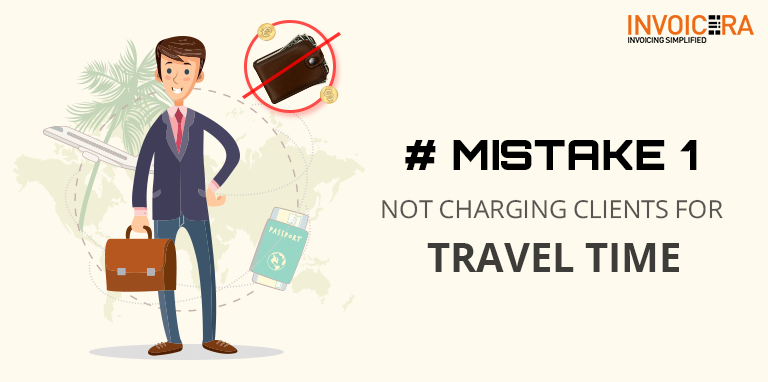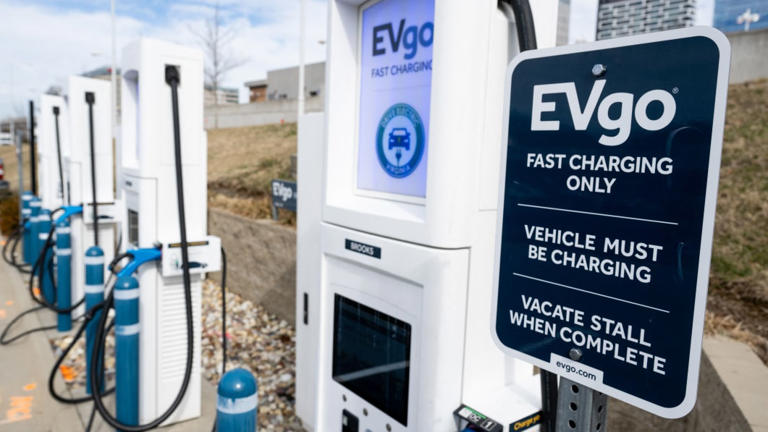
- You are here:
- Home »
- Blog »
- Starting A Computer Repair Business »

How to Effectively Charge Customers for Travel Time

Tackling any topic related to rates is likely one of the most debatable areas to touch with a ten foot pole. Technicians are stoutly protective of their pricing structures when the discussion comes up. However, I’m admittedly adventurous in this realm and believe that the more open we are with effective ways to address travel costs, the better we can serve our customers in settings fees that are appropriate for both sides. I took a chance to address proper self-worth valuation when it comes to pricing a little while back, but let’s see if we can tackle travel costs this time around. My goal here is not to say that my methodology is necessarily better; it works for my computer repair company FireLogic and I’m open to sharing it fully with fellow techs. The overarching goal with this article is to merely establish a friendly debate on all of the available methods for charging on travel, and weighing the pros/cons of each. There is no single method or rate that fits all technicians. We’re all disparate in our own ways: serving different communities, working with different customers, and operating within distinct socioeconomic regions.
The Technibble forums are generally host to some interesting discussion on travel fees and how to determine them. A few particular threads hosted some great insight like this one, a thread related to call out charges, and this discussion on how to charge for visits that are out of area. I’m going to admittedly pull a mixture of ideas from various forum postings below to give people an idea of what various techs have concocted to meet this growing need. Let’s take a look at the different ways you can charge your own customers for travel time.
The flat hourly rate
I’ll cover this one first since this is how FireLogic handles travel costs. I like this model because it’s simple for a customer to understand and doesn’t require any extensive tracking/recording besides time. My view is that if someone is willing to pay for us to travel out to visit them, a flat hourly travel rate properly compensates the tech that needs to make the trip and covers gas expenses. Our travel rate is currently $20USD/hr (about 1/4 of what our hourly onsite rate is) and has proven to be a happy medium for our customers and techs. We do not charge for return travel, as the notion goes that the next customer being visited will pick up the subsequent trip as their visit charge. Some forum goers admit to charging their full hourly rate for travel, which is understandable depending on your situation. Do your research before establishing anything, but for the Park Ridge and suburban Chicago area (USA) this system has been very successful for us with little customer pushback.
Enforcing minimum onsite service fees
This is an roundabout to charging outright travel fees or an hourly trip rate. In this method, you notify your customer that they will be paying, for example, a one hour minimum of service for the visit. More than a few techs on the forums prefer this approach as it keeps travel fees out of the customer’s sight, and also cuts back on excessive abuse of onsite labor for small tasks. From the consensus I could gather, it seems that rural techs tend to like this method as travel fees are frowned upon in such locales but customers take positively to this approach. I don’t think it would be a bad idea to use a hybrid approach of a travel rate with an onsite minimum. Again, your circumstances and competition’s methods will have a big bearing on your own attitude towards this model.
Staggered travel flat-rate fee
Yet another way to charge for travel is to create a graduated, or staggered, trip charge schedule that is based upon the number of miles from your home base to the customer location. The benefit of this model is that it directly segregates shorter trips from longer ones, and gives the customer an easy way to estimate their final total. However, the downside is that if traffic catches a technician, even a short 4 mile trip in an urban area could turn out to take just as much, if not more time, than a 10 mile journey in the countryside. I personally frown upon this model since I service the suburban Park Ridge region of Chicago, and traffic can be dicey depending on time of day and the direction of a customer location. For rural techs, this may be more appealing.
Charging “by the mile” based on a standard rate
A similar method as the staggered model above, but this one ties exact mileage or distance traveled to a standardized rate “per mile” or “per kilometer.” For the United States, I have heard of many techs tie their rate to correlate directly with the mileage rate used by the federal government. As with the staggered method, I don’t believe it fully takes into account the time spent traveling to a customer in busy, traffic-drenched areas. But for techs that want a simpler, streamlined way to present their travel rates to customers, this is about as clean cut as it gets. Tying your travel rate to the same as the government uses cuts down on arguments from clients because you can merely point them to the higher authority for why you charge what you do.
Utilizing different onsite vs offsite service rates
My company uses this notion for how our prices are set. For our case, it’s not directly to take into account travel costs. We differentiate hourly rates moreso because of the simple fact that when I am onsite, I am dedicated solely to that single customer. I cannot multi-task in any way like one can do in-shop or from their home office. For this reason, a different price is justified. But some techs claim that merely forgoing a separate travel fee and charging an inflated 20-30% of their regular rate is effective. The benefit is that you can mask your travel costs to the customer. The downside is that such a massive difference in rate may sway more customers than you wish to use your services at the “discounted” rate and stick to remote support or the like. Good or bad, it’s up to you to decide how this may work out.
Whichever method you ultimately decide to use, remember that doing some competitive analysis is always key to a rate structure that customers will be open to. You don’t want to blindly change your travel fee methodology without sniffing around to see what your local techs are charging, and how they are structuring their fees. Systems that may work well for rural areas are not always suitable for urban areas as I described above. Do your homework, reach out to some customers for their feelings, and make an informed decision. How you publicly account for travel expenses using any of the methods above may be just as important as what amount you charge a customer.
Feel free to post your own ideas or comments on what you think is the best way to charge for travel. What works? What doesn’t? Let us know!
Related Posts
Personal Security When You’re an On-Site Technician
My 7 Point Approach to Every Support Call
Become A Computer Technician: Starting Out On Your Own
This was a sticking point for me for a while. Because there is a major interstate that runs right past me, 20 miles north or south can take only 20 minutes to drive, while 20 miles east or west can take 45 minutes or more.
For that reason, the easiest way for me to do this was to charge a flat “travel fee” for any work done outside of my county. This is flexible, and depends on the work being done as well. If it’s a long-time client that I get a lot of work from, I may waive the fee. But I usually charge first time customers the travel fee just to make sure they’re serious about the job.
This is a very situational issue, and you seem to have covered most of the scenarios. Great read!
Matt http://www.yfncg.com
Thanks Derrick, good article.
One idea I thought was not directly stated in your article about the difference between bench rate and outside or the on-site consulting call is that they often require different levels of training thus have different levels of service in addition to the convince to the customer and different levels of cost to the provider. I can often schedule our bench with a brand new, out of tech school tech with minimal additional training and experience which we call a Jr. Tech who also BTW, makes minimal wages. I would never send this person to someone’s business or home not knowing exactly what he was walking into. On the other end I cannot send a senior tech to Cisco routing or Windows Server active directory/permissions issues. So there are at least three levels of training and experience required for these three types of service. We also have a fourth level tech which I pay on contract when things get above my head and I bill him out at $200 per hour.
At Computer Fix-It we have four levels of tech. Jr bench tech, senior tech that can do all sorts of calls everything short of heavy networking/server permissions and a Consultant who does the network design and maintenance. We get three rates. $59.99 bench rate, also that is our most profitable as you stated we can work on three or more computers at the same time. This level is supervised by a manager or Senior tech or senior consultant. Our senior tech bills out at $99.99 per hour on site to your home or small office. We also charge one way travel within the county (about 20 mile radius). Then we have a Consultant who can do minor routing, server permissions or active Directory type issues at $120 per hour also one way travel. If travel is outside our county we have a one way travel added and a 2 hr minimum billing. Finally, we have a 25 year Novell CNE and senior consultant who we bill out at $200 per hour when we need him. He is a contract employee as most of my clients do not require his level of skills.
With regards to travel, I inquired with one friend who owns a business in NYC “how you handle peak traffic and get across town which could be 1 hr or more travel?” He said that they schedule first of the day appointments which is during rush hour and they just show up at the clients site same as they would show up at their office so there was no additional travel and by the time they finished the first job it was no longer peak traffic so they go to the next appointment. Likewise for evening peak traffic they would schedule a job no later than 3pm so that they would be onsite working when peak travel began in the afternoons and then would just travel home same as if they left their office at 4 or 5pm. One thing they do is bill 2 hr minimum call no matter what time of work day which helps offset some of the additional travel expenses and they charge parking which is easily $25 per call.
Derrick, I hope to see an article on how to set adjust your prices. I believe most members could benefit from that. When initially setting your prices, one should be careful and not give too much attention to the lowest priced competition. At least not pay attention to the small or new competition which have not taken care to professionally setup their operations. It seems every tech how has the idea to start his own company thinks he is going to undercut the market and steal always all the customers. I have seen many small startups price themselves out of business. I mean they are too cheap and even if they get the requisite business, cannot get enough revenues to sustain their company. Then new companies come in and also practice the art of followership thus set their prices at what they perceive is the going cheap rate and they all go off a cliff together like a stampeding herd of buffaloes.
I live in a semi-rural area – in the city I can be anywhere within 1/2 hour, even during our “rush hour”. I have several rural clients, which, as I live near the edge of town, I can get to just as quickly as I can to clients living cross-town. I charge a flat hourly rate, minimum 1 hour and charge in 1/2 hour increments, and include travel time (which is usually not a factor). For example, if I spend 15 minutes traveling and 1 hour on site, then I charge 1.5 hours; if I spend 15 minutes travel and 1/2 hour on site, I charge for an hour. However, if I spend 10 minutes travelling and 55 minutes on site, I only charge for one hour (one does need to use some discretion). In the end, it all evens out – I don’t even mention travel charges unless the time will be 1/2 hour or more.
I add half hour at my hourly rate as long as the drive doesn’t last longer than 1 hour for the two way trip.
Interesting to hear about the different ways you all handle travel. I could never have covered every possible method, so good to see people chiming in with their own personalized styles!
I think customers prefer to see a price breakdown for every cent charged. I like using the gas price to mileage formula. I feel that charging for traffic is unnecessary and traffic should be calculated and dealt with personally. Our customers should not have to pay for traffic. Calculate your routes according to traffic and time a day.
I charge a minimum 1 hour fee per visit. All my traveling across the city (Toronto) is by bicycle. Any job that it takes me less than 30 minutes to get to from my home I don’t charge a travel fee. Over than and I charge roughly half my hourly rate for the whole travel time (including return trip). All my customers are totally fine with this.
Session expired
Please log in again. The login page will open in a new tab. After logging in you can close it and return to this page.
Cherry Picked!
Hand-selected articles, guides, and more from the makers of Check Cherry, designed to help your business grow and flourish.
Charging Your Clients Travel Fees [Beginners Guide]

If you travel to provide services to your clients, there is a good chance you've considered implementing travel fees. In this article, we'll cover everything you need to know about travel fees and provide some actionable advice to ensure you're doing it right.
What is a travel fee?
A travel fee is an additional fee added to your standard pricing. Often, travel fees vary based on the distance one travels. The further one travels, the higher the travel fee.
👉 Use a quality online booking system with travel fees built-in, like Check Cherry, so you can automatically calculate and charge clients travel fees. It saves a lot of time and ensures accurate billing.
Why do people charge travel fees?
If you package your services, there is a good chance you've factored some travel into your pricing. However, if a client needs you to drive 62 miles, your standard pricing may no longer be profitable. Travel fees allow you to service a larger geographic area by offering clients the option to compensate you for travel.
Should I charge travel fees?
If you're open to traveling further distances to work and leveraging packages to sell your services, you should charge travel fees because they will ensure you are operating profitably.
If you are unwilling to travel outside a smaller area or send proposals with custom pricing to each client, you might want to lump all costs into one price to ensure each booking is profitable.
👉 Travel fees give more people the opportunity to hire you because it expands the geographic area you are willing to serve.
Distance-Based Travel Fees
We often see our customers include a free travel range with all packages. For example, the first 30 miles are free, and if they must drive more than 30 miles, it's $2.00 per mile. Distance-based travel fees are outstanding because they are granular and account for time and fuel costs best.
Flat Rate Travel Fees Tiers
Some people like to charge a flat fee for travel. For example, one's travel fee structure might look like this:
0-25 miles - FREE
25-50 miles - $35 Flat Fee
50-100 miles - $125 Flat Fee
This option is much less popular. One positive aspect is you can make one tier meaningfully more expensive than another.
Round-trip or one-way?
The majority of Check Cherry customers charge one-way travel fees. If a wedding venue is 55 miles away, they charge a travel fee based on 55 miles (single trip). Another option is calculating based on the length of getting to and from the service address (round trip).
One-way calculations make it easier for the client to understand your fee structure because most clients will not think to double the distance. If you opt to charge on a one-way basis, consider increasing your per-mile fee to account for the trip back home.
On the other hand, the round trip calculation will make the per-mile fee appear lower than a single trip fee. This may be helpful during the initial sales process. Round-trip is also a more accurate representation of actual costs associated with you traveling on behalf of a client.
Should I just use the rates provided by the IRS?
Each year, the IRS releases Standard Mileage Rates . In 2022, the amount was 58.5 cents per mile. Check with the IRS or your tax professional each year and track mileage for any business purposes. Regardless if you charge travel fees or not, you can deduct the cost per mile that you travel for business. Talk to your accountant about how to do it right.
Remember that the number provided by the IRS each year is based on an annual study of the fixed and variable costs of operating an automobile. It's probably a mistake to charge clients based on rates set by the IRS.
How much should I charge my clients for mileage?
This answer will vary by market, service type, and ideal customer profile. Here are three factors to consider when calculating a travel fee:
Travel time
One of the more significant expenses is your time, and travel will effectively increase the time you need to dedicate to complete your service. If you have staff, you probably want to pay them for travel time to ensure they want to work a booking or event.
Gas prices are outrageous. Do a rough calculation to see what it goes to drive 15, 25, or 50 miles based on your fully-loaded vehicle.
Vehicle wear and tear
The more you drive a vehicle, the more it costs to own due to depreciation, interest on your loan, insurance premiums, maintenance, and repairs. Estimates can be as low as $0.21 per mile and more than $0.62 per mile. You can use this handy calculator to get an estimate for your vehicle.
Example Travel Fee Calculation
Here is an example of how one might estimate the true costs of travel.
Fuel - $0.206 per mile
Cost per gallon of fuel: $4.33
Miles per gallon of fuel: 21
Fuel cost per mile = $0.206 cents per mile ($4.33 / 21)
Wear & Tear - $0.66 per mile
5 Year Vehicle Wear and Tear = $49,515
Vehicle Wear and Tear Per Year = $ 9903 ($49,515/ 5)
Per Mile Wear and Tear = $0.66 ($9903 / 15,000 miles)

Staff Costs - $0.517 per mile
Distance to Venue: 38.7 Miles
Travel Time: 1 Hour
Hourly Rate: $20
Cost per mile = $0.517 ($20 / 38.7 miles)

Estimated Travel Fee
$1.38 per mile ($0.206 + $0.66 + $0.517)
Automatic Travel Fee Calculations
Watch how Check Cherry makes it easy to calculate and charge travel fees . You can create multiple travel zones, limit bookings outside your service area, and more.
People will ❤️ how easy it is to book you online.
Try Check Cherry free for 14 days, no credit card required.
⭐⭐⭐⭐⭐ "I love it!"
"I found Check Cherry when doing a search for something to schedule mini sessions for my photography business. It's the perfect end to end online booking and payment solution. I has made my work so much easier, and its convenient for my clients to click to select their session, sign the contract, and pay. I love it! Not to mention, their customer service is on point. Quick response time and open to suggestions. Fantastic!"
Like What You’re Reading?
Precise tracking and billing made easy with our comprehensive solution.
How Much To Charge Clients For Travel Time?

- Written by Varun Bhagat
- Published November 30, 2023

Table of Contents (Hide) (Show)
#ezw_tco-2 .ez-toc-widget-container ul.ez-toc-list li.active{ background-color: #ededed; } table of contents toggle table of content toggle.

Subscribe to our blog
Table of Contents
Do you ever wonder how much time you spend on travelling?
According to the Corporate Travel Index compiled by Business Travel News, a businessman on average spends $319 traveling per meeting . For any small business, Travel Time is an important aspect and must be taken care of with utmost sincerity. Once you understand the true worth of your services it will help you get paid for them more appropriately. While you take steps to make a lot of your cost bearing services easier for clients, it is also important to realize the worth of money being spent on it. There are various methods that can be adopted while charging for travel time and one can choose the most appropriate one depending on the business requirements.
Every business owner has a variety of clients and one can understand the needs and requirements of each one properly, before choosing how much to charge them.
Here are some popular methods you can adapt to know how much to charge the clients for the travel time.

Onsite Fees
One can charge the client a visiting fee for each of the onsite visits. This fee does not mention travel costs or costs of tasks per sec. It just mentions a price that will be charged for each onsite visit. This sort of fee leaves little room for confusion for the client. It gives a clear idea to the client, with respect to the visiting fee. As an alternative, one can use a combination of travel expenses and the cost of service, depending on the situation.
Hourly Rate
How much to charge for travel time? A flat hourly rate is a simple way to charge the client for an onsite visit. It can be a separate rate for traveling to a client site for work. Again, this type of model is simple for the client to understand. Return travel prices can be avoided in this case for making the client feel more comfortable with this model.
Progressive Rate
A progressive rate for time and distance of travel can be a very useful method as well. Lesser price for shorter distances and lesser time on the site and more price for longer distance and more time on the site is what is most appropriate. The client may not have a problem with this method because the more effort put in, the more will be the price. The only exception where the client may find it uncomfortable is where that time was taken is longer due to an unprecedented traffic jam where no real value is being added.
—————————————————————————————————————————————————
Also Read: 5 Tips For Your Travel and Expense Policy
Mile Based Fee
The mileage-based rate can be a useful way to charge clients. This can be sufficient to recover the costs of fuel along with the cost of the time spent while traveling and the onsite visit. One can create a suitable mile based fee so one can recover both the costs.
Create a Different Rate for On-Site
Creating a higher rate for onsite can be justified because it includes the cost of travel as well. One charges normal hourly pricing when working offsite. On the other hand, while working on-site, one can keep the hourly rate at 30% higher than the general rate. Some clients may object that the differential pricing is on the higher side. One has to make the client understand that the price is higher because it includes travel costs.
Use The Right Tools

Still, facing issues with calculating exact travel time? Manual calculations can be confusing and error-prone. Choosing the right tools can help you track your time accurately by minutes and convert them into invoices that look professional. Invoicera, the cloud-based time tracking software and an Invoicing tool that helps you in accurately calculating travel time charges and converting them into invoices instantly.
It is one of the most preferred time tracking and billing tool for small businesses .
Whichever method you choose, remember to analyze its rate structure that clients will be open competitively. Make an informed decision on how you charge travel expenses using any of the methods above. Let’s work with the effective support of online invoicing tool .

Frequently Asked Question
Ques: how can i track my billable hours from clients.
Ans: Invoicera offers time tracking with its invoicing software to help businesses track every minute accurately they’re investing in a project. Simply activate time tracking in your device (PC or mobile app) while you’re working on a project to help your client be clearly aware of the time invested. Such precisely calculated invested time leads to perfectly calculated invoices, free from any dispute.
Ques: Does Invoicera includes time tracking to invoices automatically?
Ans: Yes, Invoicera lets you simply add pre-set values in monetary denominations of hours and minutes tracked in invoices. The automatically generated invoices can later be sent to clients directly via mail without the hassle of manual calculations.
Ques: Can I Directly invoice tracked time with Invoicera?
Ans: To directly invoice project hours, you can simply add values to the minutes and send them to clients. Sending billable hours with Invoicera is a one-step job Invoicera.
Ques: H ow to charge a travel fee ?
Ans: The two methods of charging clients for business travel is-
- Charges based on time
- Charges based on miles.
In both these cases, you can set pre-defined rates and include them in invoices to your clients with proper charge proof.
Ques: Do you charge clients for travel time?
Ans: yes, if you’re traveling on the behalf of your clients then you can raise receipts for reimbursement. make sure to discuss this as a pre-requisite in your contract., ques: do lawyers charge travel time.
Ans: Yes, if you’re traveling on the behalf of your clients to any site or court then you are eligible for charging travel charges from the client.
Ques: Is Travel considered work time?
Ans: Yes, for all work-related travels, it is considered work time.
Related Stories

Petty Cash Management 101: Tips And Techniques

Top Payment Solution Software For Growing Your Small Business

How To Ensure Your Project’s Schedule Boosts Profitability
Get 2x Faster Payments With Automated Invoicing
Boost your productivity with automated invoicing. Save time and resources - receive timely payments.

- Find a Firm
Travel Time: To Bill or Not?
By tim o'brien, apr, november 2020.
Whether you work on the agency or the consulting side, or if you hire consultants, one issue that can vary from firm to firm is how to account for and bill travel time.
Most PR professionals I’ve talked with agree that you need to bill for the time if a specific client requires the travel and prevents the consultant from serving other people.
However, what rate do you use? While the pandemic has greatly reduced travel time, it remains a thorny billing issue, and one worth addressing as more people will be heading out on the road again in the months ahead. I spoke with three veteran communicators for their thoughts.
Michael Grimaldi is a strategic initiatives coordinator for KC Water in Kansas City. Prior to that, he spent two decades working on the agency side.
“For a trip across town for a client meeting, we’d bill the driving time if we discussed the project en route,” he said. “If not, then we would bill the travel time one way only. If we had to travel a long distance or take a flight, we billed the travel time one way.
“Generally, if we conducted client business along the way or on the return trip, we’d bill it,” he added. “This may have involved discussing the client needs and plans, and planning for the meeting itself.”
He said that clients tended to be comfortable with these practices since they expect consultants to deliver value.
“At the end of the day, good clients expect to pay a fair and reasonable price for value, regardless of where the consultant was when the work was done, in the office or on the road,” Grimaldi said.
A half-rate for travel
Helen Patterson, APR, president of King Knight Communications in western North Carolina, worked for other firms before starting her own. In her prior experience, it was common to bill “full time” for travel. One former employer followed an eight-hour-day billing policy.
“Even if we spent 12-15 hours working that day, including a cross-country airline trip, only eight hours were billed to the client,” she said.
Today, Patterson says her policy is to bill distant travel at half of the actual time. In other words, a four-hour drive would be invoiced to the client as two hours. She does not bill clients for travel within her geographic market.
She says her clients haven’t objected to her travel time policies, though she admits that these days, she doesn’t travel for clients quite as often, and didn’t even during the pre-pandemic period.
“Most of my recent work has been accomplished through phone email, and video conference calls — with an occasional trip to a conference that clients have attended,” she said.
Blake Lewis, APR, Fellow PRSA, founder of Three Box Strategic Communications in Dallas, says that when traveling from one point to another for a client, he generally has billed 50 percent of the billable rate.
“A half-rate for travel strikes a balance between loss of productivity for other client work, while recognizing that clients generally view travel as a lower-value, yet necessary expense,” he said. “If material client work is done during the travel, that activity has been invoiced at the full rate.”
There are times when Lewis said it was appropriate to detail special travel considerations, such as not charging for travel from offices to the client office. These decisions have been made in consultation with the client.
“We once worked an assignment where I traveled from Dallas to their headquarters in another state part of every week, consulting on restructuring the client’s corporate communications function,” Lewis said. “Aside from airfare reimbursement, my time wasn’t billed because we knew going into the project travel was all a part of it. I used that time for administrative tasks or for just enjoying the break.” In the end, Blake said, “It can be challenging to find the boundaries. Reviewing what was planned, proposed and agreed to by the client helps make the lines more obvious.”

Tim O'Brien, APR
Tim O’Brien, APR, owns O’Brien Communications, an independent corporate communications practice in Pittsburgh, and hosts the “Shaping Opinion” podcast. His firm is a certified Disability Owned Business Enterprise (DOBE) by Disability:IN. Email: [email protected] . Twitter: @OBrienPR .

- Publications & News
- Strategies & Tactics
- Writers Guidelines
- Editorial Calendar
- Previous Issues
Subscribe to Strategies & Tactics
*strategies & tactics is included with a prsa membership.
Charge Clients for Travel Expenses: A Guide for SME Service Providers
As a service provider, striking the right balance between covering your business travel expenses and maintaining client satisfaction can be challenging. How can you ensure that your company remains profitable while providing transparent and fair pricing to your clients?
This comprehensive guide on “how to charge clients for travel expenses” will walk you through the essential steps while keeping their satisfaction in mind. From establishing a travel expense policy to understanding legal and tax implications, this blog post has you covered.
Key Takeaways
- Establish a travel expense policy to ensure consistency and transparency in the billing process.
- Consider factors such as distance, type of transportation used, duration of travel, and accommodation expenses when charging clients for travel expenses.
- Utilize strategies that focus on transparency, fairness & flexibility to balance client satisfaction with associated costs.
Establishing a Travel Expense Policy

A smooth billing process is supported by a comprehensive travel expense policy. This policy, detailing what types of expenses will be charged and how they will be calculated, imbues consistency and transparency into the process of charging clients for travel expenses. Key coverage areas for the policy should include:
- Mode of transportation
- Traveling time
- Accommodation costs
Your travel expense policy should be tailored to your specific business needs, especially when it comes to business travel. For example, consulting firms might decide to charge clients for travel costs separately from their billable hours. A well-defined policy not only provides a fair and consistent framework for charging clients but also helps maintain customer satisfaction and trust.
Factors to Consider When Charging Clients for Travel Expenses

When determining how much to charge clients for travel expenses, several factors come into play. These factors include:
- The distance traveled
- The type of transportation used
- The duration of travel
- Accommodation expenses
All of these factors should be taken into account based on your own company’s policies and industry standards.
Let’s delve deeper into these factors and explore how they impact your travel expenses.
Distance and Mode of Transportation

The cost of travel expenses can be greatly affected by the distance and mode of transportation involved. As the distance traveled increases, so do the monetary costs associated with travel, such as toll roads or public transport fees. Hence, it is necessary to set fair travel fees for clients, taking these factors into consideration.
A possible way to calculate travel expenses considering distance and mode of transportation can be by multiplying the number of miles traveled by a per-mile reimbursement rate, set by your organization or according to government guidelines. An alternative could be using online travel cost calculators that estimate costs based on factors like distance and mode of transportation.
Time Spent Traveling
Time spent traveling should be accounted for when charging clients, as it impacts the overall cost of providing services. Employees should be compensated at their regular hourly rate for travel time during normal business hours. However, it’s valid for an employer to pay a lower hourly rate for travel time outside of normal work hours.
In calculating travel time for billing purposes, the actual time spent traveling from the starting point to the destination is used, excluding any personal breaks or unrelated activities. The method of calculating travel time may differ depending on the company’s policies or industry practices, but it’s often billed at a reduced rate, such as half of the actual time spent traveling.
Accommodation Costs
Accommodation costs, such as hotel room stays and meals , should be factored into travel expenses charged to clients. These costs can vary depending on the industry, location, and specific circumstances, but clients are typically billed for the actual cost of the hotel stay and meals, which may include room charges, taxes, and any additional services used during the stay.
These accommodation costs need to be reasonable, justifiable, and discussed with the client for approval before any expenditure. Providing a breakdown of these costs and offering documentation with receipts or invoices can help maintain transparency and accountability to the client.
Different Methods for Charging Travel Expenses

There are various methods available for charging travel expenses. Flat fees, tiered pricing, and mileage-based charges are all options to consider, depending on your business model and client preferences.
Examining the advantages and disadvantages of each method will aid in determining the optimal choice for your business.
Flat fees simplify the process of charging for travel expenses by providing a fixed, predetermined amount for travel-related services, regardless of the actual expenses incurred during the travel. For example, a moving company might charge a flat fee of $50 for travel expenses within a specific radius.
Clients often appreciate the simplicity and straightforwardness of flat fees, as they can easily understand and budget for them. Nevertheless, it is vital that the flat fee charged mirrors the actual travel cost and remains fair to both the service provider and the client, ensuring the customer pays a fair amount.
Tiered Pricing
Tiered pricing allows for flexibility in charging for travel expenses based on factors such as distance and time spent traveling. With tiered pricing, clients can choose from different pricing tiers that best meet their needs and budgets.
For instance, a pest control company might offer tiered pricing based on the distance traveled to the client’s location. This approach enables customization according to individual requirements, while still covering the costs associated with travel.
Mileage-Based Charges
Mileage-based charges provide a more accurate reflection of the actual costs associated with traveling for a specific client. By calculating travel expenses based on the number of miles traveled and the standard irs mileage rate set by the Internal Revenue Service (IRS), businesses can charge clients precisely for the distance traveled.
This method can be particularly useful for businesses that frequently travel long distances, as it ensures that clients are charged fairly and accurately for the travel expenses incurred.
Communicating Travel Expenses to Clients

Maintaining client satisfaction when billing for travel expenses hinges on clear and transparent communication. Clients should be informed prior to travel about any associated expenses, which can be itemized on a separate line in the invoice . By providing a concise breakdown of fee and expense types, clients can make informed decisions about the services they are purchasing.
Discussing travel expenses and site visits upfront and involving clients in the decision-making process helps build trust and reduces the likelihood of misunderstandings or disputes. This transparency and openness in all company processes create trust and satisfaction, leading to lasting client relationships.
Handling Reimbursements and Receipts
Accurate billing and proper record-keeping for tax purposes rely heavily on efficient tracking of reimbursements and receipts. One way to streamline this process is by utilizing receipt-tracking apps or software like Hiveage that can scan, digitize, categorize, and generate expense reports for travel receipts.
Using these tools not only facilitates the reimbursement process but also allows businesses to conveniently monitor their travel expenses and ensure compliance with tax regulations. This can ultimately save time, reduce errors, and provide a more efficient and organized approach to managing travel expenses.
Balancing Travel Expenses and Client Satisfaction

For service providers, it is crucial to achieve a balance between billing for travel expenses and ensuring client satisfaction. Implementing strategies such as streamlining expense tracking and reimbursement processes, scheduling meetings strategically to reduce costs, and focusing on customer feedback can help achieve this balance.
In the end, the key to balancing travel expenses and client satisfaction lies in being transparent, fair, and flexible in your approach. This will not only help maintain the profitability of your business but also foster long-lasting and mutually beneficial relationships with your clients.
Legal and Tax Implications of Charging for Travel Expenses

Any service provider must grasp the legal and tax implications of billing clients for travel expenses. For instance, lawyers must not bill clients for more time than what is actually spent on travel or other tasks, and charges for travel expenses should be reasonable and directly related to the services provided to the client.
When it comes to tax compliance, the Internal Revenue Service (IRS) has guidelines for travel expense deductions that businesses should be aware of. To ensure compliance with relevant regulations, it’s advisable to consult with a professional, such as an accountant or tax attorney, who can provide guidance on the legal and tax implications of charging for travel expenses.
In conclusion, charging clients for travel expenses is a delicate balancing act that requires careful planning, clear policies, and effective communication. By establishing a travel expense policy, considering factors such as distance and time spent traveling, and exploring different methods for charging travel expenses, businesses can ensure they remain profitable while maintaining client satisfaction.
Remember, transparency, fairness, and flexibility are key to fostering trusting relationships with clients. By following the strategies outlined in this guide, businesses can successfully navigate the complexities of charging for travel expenses and create a win-win situation for both the service provider and the client.
Frequently Asked Questions
How much should i charge for travel per mile.
For travel per mile, the IRS has announced a rate of 65.5 cents per mile for business-related driving and 22 cents per mile for moving and medical purposes.
Do you bill clients for travel time?
Most consultants bill for travel time, either at their full hourly rate or half their hourly rate, with a maximum of 8-10 hours per day.
How can I create a clear travel expense policy for my business?
Clearly define types of expenses, methods for calculating them, objectives, goals, rules and guidelines, reimbursement process, and compliance with applicable laws and taxes in order to create an effective travel expense policy for your business.
What factors should I consider when determining travel expenses for clients?
When determining travel expenses for clients, take into account the distance traveled, mode of transportation, length of stay, and cost of lodging.
What tools can help me track and organize travel receipts for accurate billing and tax compliance?
For accurate billing and tax compliance, make use of receipt-tracking apps or software that can scan, digitize, categorize, and generate expense reports.
Join thousands of business-savvy entrepreneurs on our mailing list.
Curated emails that’ll help you manage your finances better.

Filed under
I’ve been using Hiveage’s predecessor Curdbee for years, and Hiveage improves on Curdbee in every way . The interface is polished, fast, fluid and intuitive, and the amount of features available are pretty amazing. It will be my project management software for the foreseeable future, and the only one I recommend to clients and colleagues. Jesse Couch Creative Director & Front-End Developer, www.designcouch.com
Between Curdbee & their new version, Hiveage, I’ve brought in more than $310,000 than I would otherwise not have . If I ever need to send an invoice, I know it’s gonna work, and I know they’re gonna get it, and I’ll know when they’ve seen it and paid or not paid it. At least if everything else gets hard, I know I’ve got a system there that’ll let me get paid. Micah Rich Creative Director and Owner, www.weareagoodcompany.com
Since switching to Hiveage my productivity has soared . The intuitive interface allows me to quickly send invoices on the go as well as offering outstanding reporting tools - I love it! Shaun Preece Creative Director & Entrepreneur, www.shaunpreece.com
With Hiveage I’m able to spend more time on the tasks that will actually grow my business without getting bogged down by non-billable administrative activities. Chad Cox www.buzzrocketmedia.com
Start loving invoicing — with Hiveage!
Start your 14-day free trial and see for yourself. No credit card required.
Grab $25 simply by signing up!
Join thousands of business-savvy entrepreneurs on our mailing list—and also receive a gift from us.
Privacy Policy: We hate spam and promise to keep your email address safe.

How to Charge for Travel Time: Strategies and Best Practices
How to Charge for Travel Time?
To charge for travel time, service providers typically add a separate fee to the standard pricing for their services.
This fee can be variable, based on the distance traveled, or a flat rate.
Charging one-way travel fees is more common, but round-trip fees can also be used.
It is not recommended to use the rates provided by the IRS for travel time.
When determining the travel fee, factors such as travel time, fuel costs, and vehicle wear and tear should be considered.
A recommended tool for simplifying travel fee calculations is Check Cherry.
Additionally, consultants often charge a reduced rate for travel time outside their local area and premium rates for emergencies on weekends and holidays.
To ensure all expenses are covered and consultants are paid for their time, it is advisable to have a rate card showing hourly rates, emergency rates, and travel charges.
A comprehensive example calculation with estimations for fuel, wear and tear, and staff costs can help determine the appropriate travel fee, such as the estimated $1.38 per mile provided in the example.
Key Points:
- Service providers often add a separate fee to their standard pricing for travel time
- The fee can be variable based on distance or a flat rate
- One-way travel fees are more common, but round-trip fees can also be used
- IRS rates for travel time are not recommended to be used
- Factors such as travel time, fuel costs, and vehicle wear and tear should be considered when determining the travel fee
- Check Cherry is a recommended tool for simplifying travel fee calculations.
Did You Know?
1. In ancient Rome, charioteers were known to charge extra for the time it took to travel from the stables to the racing arena. This practice not only accounted for their time but also for the excitement and suspense generated from the spectators’ anticipation.
2. The concept of charging for travel time not only exists in the service industry but also in the transportation of delicate goods. For example, art couriers often factor in travel time when calculating the cost of transporting valuable paintings or sculptures to ensure their safe arrival.
3. Did you know that some professions charge for travel time based on the mode of transportation used? For instance, taxi drivers may charge differently depending on whether they are driving through heavy traffic or utilizing a faster route such as a highway.
4. Paradoxically, there are situations where charging for travel time may prove to be less profitable. Certain repair technicians, such as those specializing in high-end watches or electronics, might offer free travel time to attract more clients and establish a reputation for excellent service.
5. Charging for travel time can sometimes lead to creative solutions for efficiency. For instance, some innovative businesses incentivize customers by turning the travel time into a productive experience. They offer services like mobile workstations on buses or provide engaging content during the journey, making the travel time seem enjoyable and productive rather than a mere cost.
Introduction To Travel Fees
Travel fees are an essential aspect of service-based industries that require professionals to travel to their clients’ locations. These fees serve as an additional charge, above the standard pricing for services, to compensate for the time and expenses associated with travel. The purpose of implementing travel fees is to ensure that service providers can maintain profitability when traveling longer distances, as travel time and costs can significantly impact their overall business operations.
Factors To Consider In Travel Fee Calculation
When determining the appropriate travel fees to charge, there are several factors that need to be taken into consideration.
Distance traveled is the primary determinant of most travel fees. Typically, the fee would increase proportionately with the distance covered, acknowledging the additional time and resources required for longer journeys.
In addition to distance, fuel costs and vehicle wear and tear should also be considered when calculating travel fees. These expenses can vary depending on the type of vehicle used and the prevailing fuel prices.
Another important factor to consider is the consultant’s time spent on travel. This time is valuable and should be compensated accordingly.
By thoroughly considering these elements, service providers can ensure that their travel fees accurately reflect the costs involved.
- Distance traveled: primary determinant of travel fees
- Fuel costs and vehicle wear and tear: additional expenses to consider
- Consultant’s time: valuable and should be compensated
“By thoroughly considering these elements, service providers can ensure that their travel fees accurately reflect the costs involved.”
Different Models For Charging Travel Fees
There are two main models commonly used for charging travel fees: the distance-based model and the flat rate model .
In the distance-based model , the fee is determined by calculating the distance between the service provider’s location and the client’s location. The rate per mile traveled is then multiplied by the total distance to obtain the travel fee. This method provides a straightforward and transparent approach, allowing clients to understand how the fee is calculated.
On the other hand, the flat rate model involves charging a fixed fee for travel irrespective of the distance. This model simplifies the billing process for both the service provider and the client, as it eliminates the need for distance calculations. However, it may result in discrepancies for clients located significantly farther away, as their travel costs may be higher than those located closer. Service providers must carefully consider their target market and business needs when deciding which model to adopt.
Recommendations For Calculating Travel Fees
To calculate travel fees accurately, avoid using the rates provided by the Internal Revenue Service (IRS) for travel time and expenses . These rates are intended for tax purposes and may not reflect the true costs incurred by service providers . Instead, perform a detailed calculation by considering factors such as estimated fuel costs, wear and tear on the vehicle, and staff costs. By incorporating these variables, a more accurate and fair travel fee can be determined .
For instance , an example calculation could consider an estimated fuel cost of $0.12 per mile, vehicle wear and tear at $0.08 per mile, and staff costs at $0.18 per mile. Based on these estimations, the travel fee per mile would be approximately $0.38 . Taking into account the distance traveled, service providers can then determine an appropriate overall travel fee.
Charging For Travel Time As An IT Consultant
Charging for travel time is particularly relevant for IT consultants who often need to visit clients’ locations for installations, troubleshooting, or consulting services. When these consultants are required to travel outside their local areas, it is common practice to charge a reduced rate for travel time . This accounts for the additional time and effort spent on traveling, as well as the potential impact on other business activities.
Moreover, IT consultants should be mindful of scope creep , which refers to unexpected additions to a project that may arise during travel or on-site visits. To ensure profitability, consultants should clearly define the scope of work and clearly communicate any additional charges that may be incurred due to scope creep. Clear communication and documentation of such changes will help protect consultants from potential losses associated with unaccounted for work.
– To charge for travel time:
- IT consultants should consider charging a reduced rate for travel time, especially when required to travel outside their local areas.
- This compensates for the extra time and effort spent on traveling, as well as any potential impact on other business activities.
– Scope creep and its impact:
- Consultants should be aware of scope creep, which refers to unexpected project additions that may arise during travel or on-site visits.
- Properly defining and communicating the scope of work can help manage and control scope creep.
- Consultants should clearly communicate any additional charges that may arise due to scope creep, ensuring profitability and avoiding losses.
“Clear communication and documentation of changes is key to protecting consultants from potential losses associated with unaccounted for work.”
Tips For Ensuring Adequate Compensation For Travel Time
To ensure consultants are adequately compensated for travel time , it is recommended to have a rate card that clearly outlines various rates, including regular hourly rates, emergency rates, and travel charges. By providing transparency in pricing, clients can be aware of the costs associated with travel time and can make informed decisions regarding their service provider.
Additionally, it is crucial to charge premium rates for emergencies that occur on weekends and holidays. These situations require consultants to be readily available and interrupt their personal time, thus warranting higher compensation. Establishing clear policies and rates for such instances will avoid any misunderstandings and ensure consultants are fairly rewarded for their dedication and flexibility.
In summary , charging for travel time is an important aspect of service-based industries. By implementing travel fees and carefully considering factors such as distance, fuel costs, and vehicle wear and tear, service providers can accurately calculate travel fees. IT consultants specifically should take into account reduced rates for travel outside their local area and be mindful of scope creep. By adopting best practices and providing transparent pricing, consultants can ensure adequate compensation for travel time while maintaining profitability and client satisfaction.
Additional Considerations:
- Clearly define the different hourly rates in the rate card
- Specify the travel charges based on distance or other applicable factors
- Use pricing brackets for emergency rates and clearly outline the additional charges
- Communicate the policies regarding travel time compensation to clients
- Have a mechanism in place for documenting and tracking travel time for accurate billing.
Frequently Asked Questions
How do you calculate travel time cost.
Calculating travel time cost involves multiplying the duration of travel, measured in minutes or hours, by the unit costs, measured in cents per minute or dollars per hour. The total travel time costs are determined by considering factors such as the type of trip, travel conditions, and individual traveler preferences. These variables contribute to the variation in travel time unit costs, ultimately affecting the overall cost estimation. By multiplying the time spent traveling with the appropriate unit cost, one can effectively calculate the travel time cost for a given journey.
How do consultants charge for travel time?
Consultants typically charge for travel time by incorporating it into their pricing structure. Instead of billing separately for travel, they may include it as part of their overall service fee. This approach allows consultants to account for the time and expenses associated with travel without specifically itemizing it for clients. However, if consultants fail to accurately estimate the impact of travel time on their hourly rate, they may inadvertently end up losing money by including it in their pricing. For instance, if they miscalculate the overall time spent on a project due to extensive travel, they might not be adequately compensated for the additional hours invested.
How much should you charge for a travel day?
Determining the appropriate charge for a travel day depends on various factors, but a common method is to charge around 50% of the basic shoot rate. Let’s take an example: if your fee is $1200, it would be reasonable to charge $600 for travel days. To calculate this, you can consider that a day typically consists of 8 working hours and work out a proportional rate. By aligning the travel cost with half of the shoot rate, you can ensure a fair compensation for your travel time and expenses while maintaining a balanced pricing approach.
How do you bill a client for travel?
When it comes to billing a client for travel, it is important to establish clear guidelines. While bigger corporations tend to have their own documented policies, individual consultants often have different approaches. One common method is to bill for travel time, with some consultants charging their full hourly rate and others opting for half their hourly rate. However, it is common practice to set a daily limit of 8-10 hours for billing, regardless of the actual duration of the travel. This ensures that the client is charged fairly, while also accounting for potential delays or unforeseen circumstances during the journey.
References: 1 , 2 , 3 , 4

Sign up for exclusive DIY tips, home renovation secrets, decor trends, special discounts, and seasonal maintenance reminders delivered straight to your inbox.
Thanks, I’m not interested

- Create an Account
- Become an Insider BOH Insiders unlock access to weekly designer classes and exclusive Insider-only workshops Learn more »
- To the Trade
- New Showrooms
- 50 States Project
- Business Advice
- Trade Tales
- Sustainability Resources
- Retail Watch
- Supply Chain
- Comings & Goings
- High Point Market
- News Digest
- Mergers & Acquisitions
- The Tearsheet
- Latest Debuts
- Meet the Makers
- Collections
- Accessories
- Wallcovering
- Architecture
- Graphic Design
- Interior Design
- Landscape Design
- Office Management
- Public Relations
- Product Design
- Sales & Marketing
- Writing & Editing
- Resume Board
- Classifieds
- Upcoming Events
- People & Parties
- Launch Workshops
- Course Archive
- Business Services
- Accounting & Bookkeeping
- Art Advisors
- Authors & Copywriters
- Book Packagers
- Business Consultants
- Legal Services
- Licensing Consultants
- M&A and Investment Advisors
- Marketing & PR
- Photographers
- Purchasing Agents
- Sales & Independent Rep Firms
- Specialty Shops & Showrooms
- Web & Graphic Designers
- Skilled Trades
- 3D & Hand Renderers
- Cleaning Crews
- Contractors
- Decorative Artists & Painters
- Fabricators
- Lighting & Lampshade Makers
- Master Carpenters
- Painters & Wallpaper Installers
- Plaster Workers
- Shippers and Receivers
- Textile Printers & Mills
- Upholstery Workrooms
- Window Treatments
- The BOH Podcast
- Current Issue
- Past Issues

Mobile Nav Bar
Mobile menu.
- Future of Home
- 6c8585ure of Home
- Newsletter Sign-up
- BECOME AN INSIDER BOH Insiders unlock access to weekly designer classes and exclusive Insider-only workshops

How do you charge for travel time?

When it comes to charging strategies, designers are notoriously hush-hush, and whether billing a flat fee or hourly, there’s a less-talked-about expense that definitely cuts into workflow: travel time. We asked five designers— Veronica Solomon , Mindy O’Connor , Anelle Gandelman , Alicia Cheung Lichtenstein and Dennese Guadeloupe Rojas —how they charge for time spent out of the office but still on the clock.

Half-and-Half “As we outline the scope of work, travel time is factored into the minimum estimated hours and billed upfront, payable in two increments: 50 percent at acceptance of contract and 50 percent at the presentation meeting. Time is tracked throughout the project (including travel time), and any overage beyond the initial minimum estimated hours is billed.” —Veronica Solomon, Casa Vilora Interiors, Katy, Texas

No Surprises “Transparently. I am clear upfront in my contracts and bill travel at cost, with any discretionary travel approved in advance. In general, virtual appointments and accessibility have certainly cut down on travel expenses overall.” —Mindy O’Connor, Melinda Kelson O’Connor Architecture & Interiors, Philadelphia

No Strings Attached “We present clients with an all-inclusive design fee when we initially give them a proposal to work with our firm. We know how many site visits, meetings and sourcing trips we need and simply factor those expenses into the fixed fee. With this approach, I have more freedom to stay at nicer hotels when a project is out of town, and the client doesn’t feel like we are constantly billing them for extras. We like to keep our billing and our entire client process as streamlined as possible.” —Anelle Gandelman, A-List Interiors, New York

Half-Full “We bill half our hourly rate for travel time.” —Alicia Cheung Lichtenstein, StudioHeimat, San Francisco

Perfect Cents “We have a set per diem that we implement when traveling to ‘away’ projects that require a flight. While on the road, we expense for flight costs, hotels and meals as well. Our clients are always comfortable with these charges, as we’ve discussed the costs upfront in our initial meetings. And for any local travel by our design team, we simply factor that into the initial fee.” —Dennese Guadeloupe Rojas, Interiors by Design, Washington, D.C.
Homepage image: A New York living room designed by Anelle Gandelman | Brittany Ambridge
- trade tales
Top Stories
Pirch halts operations, a groundbreaking real estate settlement, meghan markle launches a lifestyle brand, and more, are furniture stores dying, or just changing, want your own show here’s how one creator built a media company on youtube, must-see releases from kelly wearstler, industry west’s collab with clare, and more, 5 mistakes that are limiting your growth, and how to fix them, what happened to pirch, market week inefficiencies underscore the difference between housewares and home textiles, april’s can’t-miss design events.
Consultant, Experience & D... BSH Home Appliances Corporation New York, NY
Interior Designer Circa Interiors & Antiques CHARLOTTE, NC
Interior Designer Jenny Wolf Interiors x The Huntress New York Pound Ridge, NY
Assistant to the Editor-In... Luxe Interiors + Design Remote
Interior Design Assistant Anyon LLC San Francisco, CA
Senior Interior Designer Anyon LLC San Francisco, CA
Related articles

How do you manage out-of-state projects?

Which fellow designers inspire you?

How do you deal with project delays?

How do you stay in touch with old clients?

How does your firm practice sustainability?

How did your first design job shape your career?

Business of Home mission Statement
Newsletter and social, magazine subscribe, footer navigation.
Request a Demo
Successfully submitted.

How to Charge Mileage to Customers?
For companies whose operations depend on employee travel, efficient mileage tracking and charging are crucial. How you calculate and set mileage rates determines your financial success.
If your company requires staff to travel for work, appropriately billing clients for mileage ensures that your team is adequately reimbursed. As a result, figuring out how to charge for miles is critical.
In this article, we’ll look at why charging mileage to customers is important, the challenges you might face while doing so, and the different approaches to doing it. We’ll also cover how Timeero’s features can simplify tracking and charging mileage, saving your company both time and money.
Accurately Track and Charge Mileage to Customers.
Learn how Timeero can help you out.
Why is Charging Mileage to Customers Important?
Every mile matters when it comes to operating a business. The significance of charging mileage goes beyond a collection of numbers on a receipt. Here are some reasons why this is a necessity for companies with employees on the move:
1. Fair Compensation
A fair way of compensating staff members for using their personal cars for business travel is to charge mileage to clients.
Expenses associated with fuel, maintenance, and vehicle wear and tear are incurred by employees who travel for work. Accurately billing customers ensures these mileage expenses are covered, eliminating disputes.
2. Accurate Cost Recovery
Accurate mileage billing enables precise recovery of costs for companies with field-based teams. It guarantees that the organization is accounting for indirect expenses such as vehicle depreciation.
This is in addition to the direct costs related to travel. In order to avoid financial losses, accuracy is essential.
3. Compliance and Tax Benefits
Compliance with tax requirements requires accurate mileage recording and billing. The ability to offer precise mileage records can assist organizations in taking advantage of tax deductions for business travel.
Challenges Businesses Face in Charging Mileage
While charging mileage to customers is fairly simple, it comes with its own set of challenges.
1. Transparency Is Lacking
Workers may feel that their actual expenses are not being compensated appropriately if no unified and transparent process is in place. The working relationship between employers and employees may suffer as a result of this lack of transparency.
To ensure everyone agrees, you can create a policy to improve accountability. Use our free mileage reimbursement policy template to safeguard both your interests as a small business and those of your staff.
2. Inaccurate Record-Keeping
Errors and disputes can arise from the use of paper records, manual tracking, and complicated reimbursement methods. This could be the result of accidental human error, deliberate manipulation, or just wrong estimations.
Undependable records can lead to disagreements between employees and employers.

3. Time-Consuming Processes
Traditional methods of tracking and charging mileage are time-consuming. Employees spend valuable time manually logging their travel details.
Managers must then review and process these records, which eats up even more time. This can result in increased labor costs and decreased productivity.
What Is the Best Way to Calculate and Charge Customers for Mileage?
Using the conventional odometer is no longer sufficient for calculating mileage costs for businesses. Developing an elaborate and practical mileage-based pricing strategy is the only viable solution.
When deciding how to charge clients for business mileage, you have a few methods to choose from:
Charging a Flat Rate
Charging a flat rate for miles entails charging a set cost for each business trip, regardless of distance or time spent. This strategy provides both businesses and customers with a sense of predictability. It is ideal for companies with standardized services or consistent travel patterns.
- Flat rate charging is simple and uncomplicated for both businesses and clients.
- Clients know exactly what prices to expect, allowing them to budget more accurately.
- Flat rates may not correctly represent real mileage expenses, resulting in either undercharging or overcharging.
Per Mile Charging
This method involves assigning a specific cost for each mile traveled. It aims to directly correlate charges with the actual distance covered, more accurately reflecting the travel costs incurred.
It’s most suitable for businesses with variable travel distances or those where the actual distance traveled is a key factor in determining costs. In order to charge your customers fairly, don't forget to keep track of your miles. Consider your car expenses and industry when determining your rate.
- Charging per mile is more precise, aligning charges with the actual distance traveled.
- Employees are compensated based on the actual usage of their vehicles, promoting fairness.
- Calculating mileage charges might be more difficult than using a fixed rate.
- Clients may find it difficult to forecast prices, especially if mileage varies significantly.
Charging Per Hour
When you charge by the hour, you have to figure out how much each hour of travel for work costs. This method considers time rather than distance traveled, providing an alternate viewpoint on payment.
Assume your employee travels for two hours to a customer location. If you charge $25 per hour, the client would be charged $50 for travel time.
- This method offers simplicity for clients who may find it easier to budget based on time.
- It does not directly account for the distance traveled, which may lead to overcharging or undercharging.
- Managing and explaining hourly charges may be more complex than other methods.
Hybrid Approach
This method combines aspects of flat rate, per mile, and per hour charging to create a customized and flexible pricing structure. It enables companies to tailor charges according to project specifications or customer agreements.
- It offers businesses the flexibility to charge based on the unique needs of each client or project.
- This approach can adapt to different scenarios, allowing businesses to use a combination of methods.
- This strategy may be more difficult for business owners to understand than the others.
How to Charge for Mileage Using The IRS Rate
Charging at the IRS mileage rate entails applying the Internal Revenue Service's (IRS) standard mileage rate for business-related travel. You can utilize the CRA mileage rate if you are in Canada.
For 2024, the IRS standard mileage rate is 67 cents. For instance, if an employee drives 100 miles for work, the company can charge $67 (100 miles x 67 cents).
Customers are likely to accept charging mileage at the IRS standard rate since it is not too expensive. However, please note that it may not cover all of your travel expenses. This is particularly true if your business incurs additional charges such as tolls or parking fees.
This mileage rate is optional; you may choose to use it or another alternative rate.
How Does Mileage Tracking and Charging Work on Timeero?
On Timeero, your employees' mileage tracking begins the moment they clock in. It continues up until they clock out.
When an employee moves above a set speed threshold, the motion-based mileage tracker app perceives it as driving. The software has a breadcrumbs feature that offers a comprehensive breakdown of the employee's journey. Each breadcrumb serves as a location marker and when you hover over it, you will see a timestamp and the speed at that particular point.

This offers insights into an employee's movements throughout the workday. The visual representation allows employers to track the exact path or route taken by the worker and verify mileage.
When determining mileage, any speed exceeding 4.5 miles per hour is taken into consideration. This guarantees that walking or time spent stuck in traffic won't be factored into mileage estimates. Administrators can also set the desired speed threshold in their accounts because it is customizabl e.

If an employee forgets to track mileage , they can manually enter their travel distance. You’ll just have to enable this functionality in your company account settings.
It’s clear that Timeero makes tracking mileage for work a breeze, but what about charging for these business miles?
Timeero allows you to set a mileage cost per mile in your account settings. This per-mile charging method simplifies the process, as you don’t have to carry out any extra mileage calculations. The app takes care of that for you. Even better, by selecting the currency in your area, you may adapt this to your company's exact location.

Benefits of Using Timeero for Mileage Charging
Timeero offers a range of features that simplify mileage tracking for business purposes and enhance efficiency in charging customers. Let’s explore the benefits of using Timeero for mileage charging.
Automated Mileage Tracking and Charging
Timeero's automated mileage tracking feature eliminates the need for manual entry. The software uses GPS technology to precisely record and compute mileage based on real distance traveled.
You can avoid manually calculating mileage expenses at the end of each journey by setting the cost per mile in your account. This decreases the possibility of mistakes. It also saves both employees and administrators time. You won't have to worry about how to charge for mileage anymore.

Real-Time Visibility
With Timeero, businesses gain real-time visibility into their employees' travel activities, whether they are driving to client meetings, making deliveries, or attending offsite events. You'll be able to monitor your team members' movements as they drive from one site to the next.
This openness guarantees that mileage records are error-free. Employees and employers may get the correct information at any moment, promoting confidence and responsibility inside the business.
Time and Attendance Information
Every employer's desire is for operations to run as smoothly as possible, and Timeero strives to make that a reality. Mileage tracking, as well as time and attendance functions, are smoothly incorporated into the software.
This enables businesses to link mileage data directly with employee work hours, providing a holistic view of work-related activities. Each timesheet has information about the times the employee clocked in and out, total hours worked, breaks taken, overtime, and covered mileage.

You get an overview of how the employee spent their workday. This ensures that mileage charges are associated with the appropriate work hours, enhancing accuracy in compensation.
Customizable Mileage Rates
Timeero allows businesses to customize mileage rates based on their preferred rate. Once you enter your preferred cost per mile, the app will calculate total costs for you.
This guarantees that businesses can appropriately charge clients, reflecting the actual costs of travel. This comes in handy when independent contractors and self-employed individuals are charging travel expenses for their own vehicles for business use.
Mobile Accessibility
Timeero's mobile app allows employees to track their mileage on the go. This mobile accessibility guarantees that no trips are missed, which is especially important for staff that's outside the office.
It also makes it quick for employees to claim mileage and managers to review and process it, simplifying the whole process even more.

All mileage records are centralized by Timeero on a secure, user-friendly platform. Due to this record-keeping, admins can review, approve, and process mileage claims more easily.
A historical record of all travel-related activities is also provided. In addition to timesheets, you receive mileage tracking reports and other valuable reports for your company.
These reports can also be exported in PDF, Excel, or CSV format. Businesses can get the particular information they want owing to the option to build customizable reports. This is very helpful for internal audits or external reporting for mileage deductions.

Integrations
Once you get the total mileage cost for your customers, the next step is to reimburse your employees for their business expenses. With Timeero, you can eliminate time-consuming, repetitive tasks by automating employee mileage reimbursement.
The software simplifies payroll calculations by integrating multiple payroll and invoicing platforms. These include Paychex, Gusto, Xero, ADP, Rippling, Zapier, Vieventium, and Paylocity.
.webp)
Use Timeero to Simplify Charging Mileage
Transforming how to charge for mileage allows you to stay competitive in today's market and get compensated fairly for your incurred expenses. The traditional way of doing it is time-consuming and, without a doubt, highly prone to errors.
Choosing the right charging method can significantly impact cost recovery and client satisfaction. Using Timeero’s mileage tracking features can be a game changer for your company. The app's flexibility in customization allows businesses to implement a straightforward charging method.
Adopt Timeero today to streamline your mileage charging processes.
Timeero: Your Solution for Accurately Tracking and Charging Mileage

Emily Maina is a tech-savvy writer with a passion for creating content. With years of experience in the industry, she is well-versed in the latest trends and developments in the tech industry. When she’s not working, Emily enjoys exploring the great outdoors or watching her favorite shows.
Related Articles
Looking for the best app for painting contractors? Read our guide to find the four best software apps for painting contractors of all sizes.
Managing employee travel expenses can be a headache. In this guide, we’ll explore gas card vs. mileage reimbursement, helping you make the right choices.
This guide provides a closer look into the policies, practices, and IRS guidelines surrounding nonprofit mileage reimbursement.
Track mileage automatically
How to charge mileage to customers, in this article, when and how to charge mileage to customers, how much to charge for mileage, charging mileage to customers at the irs rate, deducting car expenses at tax time.
If you own a small business and often have to travel considerable distances to provide your services, you may have considered if you can and should charge for this expense. The short answer is yes, you can certainly charge for your travel expenses . Let’s dive into the why, how and how much of charging customers for mileage.
Providing your services to an area larger than your home area can bring you more jobs, customers and profit. In this case, you should consider charging for your mileage to ensure the jobs you take are profitable for you, and not eaten up by extra expenses such as longer travel.
While customers are generally used to such fees, how you present them will depend on your industry practices and competitors, and what customers are used to. Always be upfront with your customers on any charges outside of the services you provide.
There are a few options you can consider when deciding how to charge mileage to customers - you can bundle the charge with your service, ask for a flat rate for distance ranges, a charge per mile or per hour of driving, or use a hybrid system of a flat and variable rate. Read on to learn more about each option.
Charging a flat rate for distance
If you choose to charge a flat rate for the distance you travel, you can consider a tiered system where the first 20 or so miles are free, then charge a higher sum for ranges of every 20, 25 or 30 miles.
Charge per mile
If you choose to charge your customers per mile, you might again consider providing a few free miles, then ask for a rate per mile for each mile you’ve driven to and from the job. Remember to track your miles so you can fairly charge your customers. Choosing a rate will again depend heavily on your industry and car expenses.
Charge per hour
Simply charging per mile might not be convenient for you if you live in a more congested area with frequent traffic. A 10-mile trip in the city might take you double the time of a 20-mile trip in rural areas. In this case, consider charging mileage to customers per hour. You can break up the hour into four 15-minute sections and charge accordingly. So, if you drove for an hour and 15 minutes, you will charge your customer the 15-minute rate five times for the time you spent in your car driving to and from their location.
The hybrid approach
If you struggle to choose the right method for you, you can consider charging a flat rate either per mile or distance, and if stuck in traffic, additional charges for time spent in the car - this method is a bit more complicated but it can help you better cover your expenses for transport to and from your customers.

Mileage tracking made easy
Trusted by millions of drivers
The most important thing to get out of the way is that there is no one right answer on how much you should charge customers for mileage. This will largely depend on the industry you operate in and the type of service you provide, the area you live in, who your customers are, and last but not least your car expenses. Naturally, driving a big vehicle heavy with tools or equipment will cost you more per mile than if you drive a regular sedan you don’t weigh down with heavy equipment.
As we discussed above, it is up to you to decide how much you want to charge customers for mileage. Choosing to charge mileage at the IRS standard rate will likely go down well with customers as the rate isn’t high. However, keep in mind that it may not cover your mileage expenses. The IRS has now announced the 2024 IRS mileage rate , which stands at 67 cents per business mile.
Regardless of how much you decide to charge customers per mile, the charge is a part of your income and will be taxed accordingly.
At tax time, you will be able to deduct all business-related car expenses by either the standard mileage rate or by the actual expenses method. Remember to track all mileage associated with your business for a compliant mileage deduction. Find more about deducting mileage as self-employed .
We recommend an automatic mileage tracker app like Driversnote. Driversnote will take care of tracking your trips for you, and you can easily create IRS-compliant mileage reports for your deductions.
How to automate your mileage logbook
Latest posts
Car allowance vs company cars - which is better for your business.
- Track mileage on iPhone | Driving, walking & running
- Can you claim mileage on taxes if not self-employed?
Automate your logbook
Related posts, irs mileage guide.
Mileage reimbursement in the US — rates and rules for employees, self-employed and employers in the US.
IRS Mileage Rates 2024
The standard mileage rate for business will be 67 cents per mile, effective Jan. 1st, 2024 - up 1.5 cents from the 2023 rate of 65.5 cents.
Learn all about car allowances vs company cars in the US and how to decide which is right for your company in 2024.
Choose your Country or region

- Member login
- Essentials Library
- Business Accelerators
- Advisory Council
- Project Simulator
- NSCA Strategic Planning
- Frontline PM & Jobsite Management
- Navigate Academy
- Technical Assessment Tool
- REVUP Achiever Outcome-Based Certification Selling
- Track Legislation
- Association Agenda
- NAICS/SOC Codes
- State Licensing Guide
- Codes & Compliance FAQs
- Business & Leadership Conference
- Pivot to Profit
- Webinars & Roundtables
Ignite/Job Board
- Integrate/News/Blogs/Videos
- Integrate: NSCA’s Trade Journal
- Industry News
- Industry Insight Videos
- Success Stories
- Board of Directors
- Committees & Councils
- Privacy Policy
- Download Logos
- Member Directory
- Member Benefits
- Why Join NSCA?
- Pay Bills Online
How to Handle Trip Charges for Service Calls
July 5, 2012.
Q: I’m going back and forth with our customers and accounting department over trip charges for service calls. How do other NSCA members handle this?
A: There are several common methods and practices used. Some work better in larger markets, others work better in a more rural setting. Another factor to consider is that the customer may have limits on mileage charges. Here’s a few examples of the most common methods used.
A fixed rate or flat fee for a trip charge within a radius of the service facility. This option allows for more flexibility in running several calls, picking up materials, etc. without needing to track mileage and account for each client separately. This is added on to the actual labor charge (time and materials used). An actual mileage-based trip charge. This requires you to calculate each service call as if it was a round trip from the shop. Typically the contractors use the latest IRS reimbursement amount as the basis for the mileage charge (55 cents per mile in 2012). You need to have you’re billing or payables clerk verify the mileage on each ticket to make sure you never exceed the actual distances. This too is added on the labor and materials used. A discounted labor charge. Many of our members do a reduced rate for driving time, or charge just one way to keep their clients from paying for them sitting in traffic. It’s also quite common to have a minimum fee to “roll the truck”. Even on a “no-problem-found’ service call a minimum charge (2 hours is typical) plus a trip charge or mileage is fairly common.
The complicated part of all this is when the customer dictates a different type of billing method, or they may have their own policy for reimbursing travel time or trip charges. You will need to have a standard policy in place, but be prepared to be flexible when the client demands something different. CW
Member Access

Your Organizing Business
Where professional organizers learn and connect
Facebook Twitter Linkedin Pinterest Instagram
This page may contain links to Amazon.com or other sites from which I may receive commission on purchases you make after clicking on such links. Read my full Disclosure Policy

As a professional organizer, you probably spent a fair bit of time figuring out how much to charge for your services , whether to bill by the hour or the project, and whether or not to offer free consultations. An equally important decision is whether to bill for the time you spend travelling to your clients’ location and any expenses you occur doing so.
There are many different ways to approach this, but as a business owner, there’s one thing you must always keep in mind:
Time is money!
If you have a fixed service area, it’s probably easiest to build your travel time and costs into your regular rates, but if you’re willing to drive greater distances, you need to make sure you’re still making a reasonable income once you factor in the amount of time you spend on the road, as well as the cost of gas and other expenses related to owning and maintaining your car.
You may wish to charge a set amount per mile (or kilometre) and add it to your invoice. You will, of course, need to include this in your agreement with the client. The problem I have with this method is that it is too precise, and it can get complicated if you take a wrong turn or need to run an errand on your way to the client’s location.
When I was operating my organizing business, I developed a system that ensured I was fairly compensated, without worrying about taking the shortest possible route to my clients’ locations so they wouldn’t think I was gouging them. Here’s how it worked:
- Anyone within 45 km (approx. 30 miles) fell within my local service area and did not pay a travel fee. I made a list of the cities and towns that fell within those boundaries.
- I also listed the places that fell within 50-74 km (approx. 30-45 miles) and 75-100 km (approx. 45-65 miles) and decided on a set travel charge for each of those areas. If the client was farther away than that, I would refer to job to another organizer who was closer.
- I had a higher travel charge for downtown Toronto, which technically fell within 100 km, to cover the inevitable high parking costs and time I’d spend in heavy traffic.
I included all of this information along with my rates on the printed sheet I kept on hand while speaking on the phone with clients, so I could quickly, easily, and confidently tell them how much their travel charge would be.
This system worked well for me, but it’s not the only option. If you have a different approach, please tell us about it!
Photo © iStock.com / killerb10
I recommend...

Janet Barclay
Join the conversation.
I tried doing a per kilometre rate but in all honesty, it was too much paperwork! Since most of my clients are in rural/small town areas (longer distances-less traffic), I’ve found that the flat rate fee works best for me. It also allows my clients to easily work out my fee. The clients that live further away are booking me for more hours per appointment because I charge $X per trip.
Thanks for sharing that, Jacki! It sounds like our experiences have been quite similar in that way.

I also find that mileage is unpredictable, because very often in the outlying areas beyond me, a 30 mile trip might take one across mountains or through 30 mph zones or stick one behind a tractor driving more slowly than I could walk.
For the cities within about a thirty mile radius, I charge no fee. Beyond that, I charge a per-hour travel charge–in one direction. (The way I see it, the clients are paying to get me to come to them; clients don’t care if I actually get home…or move in a block away.) I always GoogleMap the directions, anyway, so if a client doubted the distance, I’d have it printed out, but there’s never been a problem.
In the olden days, I was willing to drive up to 90 minutes to a client; then it was 75 minutes, then 60. Nowadays, I very rarely am willing to drive more than an hour to a client. There’s about a 90 minute span between the center of my service radius and that of my colleagues in other cities, so this works out quite well.
Julie, I’ve never heard of charging for travel time there but not back, but it makes a lot of sense. If you don’t mind me asking, is your rate for travel the same or less than your rate for organizing?
pls let me know how much will i charge my client per miles in driving her for her errands. thanks
Jimmy, you should check with your local tax office to find out the going rate in your area. You’ll want to be sure that you’re adequately compensated for wear and tear on your vehicle, gas, and other expenses such as car insurance, in addition to your time. Speaking of insurance, make sure that you have business coverage, especially if you’re using your car to drive clients to errands.
Great tip for new organizers Janet! I’m gonna post this on LinkedIn in Geralin’s new organizer group. 🙂
Thanks, Autumn! I always appreciate a little link love. <3
Leave a Comment Cancel Reply
This site uses Akismet to reduce spam. Learn how your comment data is processed .
Related Posts

How Much Should I Charge for Organizing Services?

Getting Paid for Your Services

Book Review: Get Rich Organizing

How Publishing My Rates Has Helped My Business

Competition Can Be Tough: Dealing With Competitors That Undercut You
- Search Search Please fill out this field.
- Building Your Business
- Business Taxes
When Must I Pay Employees for Travel Time?
Travel Time vs. Commuting Time
Image by Jo Zixuan Zhou © The Balance 2020
In general, your business should pay employees for the time they spend traveling for work-related activities. You don't have to pay employees for travel that is incidental to the employee's duties and time spent commuting (traveling between home and work). Travel time can include both local trips and travel away from home.
Travel vs. Commuting Time
Commuting is going back and forth to work. Everyone (at least everyone who doesn't work at home) commutes to a job. Commuting time is personal time, not business time. The IRS does not allow businesses to deduct commuting time as a business expense, and employees should not be paid for the commuting time.
The Department of Labor (DOL) discusses employees who drive employer-provided vehicles. The DOL considers the time spent in home-to-work travel by an employee in an employer-provided vehicle, or in activities performed by an employee that are incidental to the use of the vehicle for commuting, generally is not "hours worked" and, therefore, does not have to be paid.
Here's a possible rule of thumb: If your business authorizes a trip by an employee, no matter how the employee travels (car, train, bus, etc.) you should pay for the employee's travel time.
Travel time for hourly and salaried employees may be counted differently. Pay to employees for local travel time is only applicable to non-exempt (hourly) employees, not to exempt (professional or managerial) employees. Exempt employees are paid for their expertise by the job, not by the hour.
Different Types of Travel Time:
Home to Work Travel , as explained above, is commuting time, not work time, and it's not paid.
Travel on Special One Day Assignment in Another City. The DOL says "the time spent in traveling to and return from the other city is work time," but they note that you may deduct the time the employee would spend commuting.
Sara works in an office in your company, but you send her to another city on a special assignment. She leaves from her home, goes to the city, and comes back home the same day. She spends 3 hours traveling (1 1/2 hours each way) from home to the other city. She would normally spend 30 minutes total driving from her home to work and back, so you could deduct the 30 minutes and pay her for 2 1/2 hours of travel time.
Travel That's Part of the Employee's Normal Work. Time an employee spends traveling is part of the job. You must count this time as work time. The time the employee spends going to the first job site, and home from the last job site, is commuting time and isn't paid.
An LPN (licensed professional nurse) works for a nursing facility and travels between the two locations of this facility, providing care for patients at both locations. Her daily travel time between these locations must be included in her pay because she is not commuting. But she can't count the time driving from home to the first location or the time back home from the last location.
Travel Away from Home. If travel includes an overnight stay it is travel time. The DOL doesn't include travel away from home outside regular hours as a passenger on an airplane, train, boat, bus, or car as work time. But you must count hours worked on regular working days and work hours on nonworking days (weekends and holidays).
If an employee travels from Cleveland to Pittsburgh for a two-day seminar at the direction of your company, you must pay for the hours the employee would have worked in a normal workday for each of those days, even if they were on Saturday or Sunday.
Incidental vs. Work Travel: Paid or Not Paid?
- An employee drives to work from his home every day. You ask him to stop on his way and pick up bagels for the staff meeting. This driving time is not paid. Time commuting to work is never paid time; the time to stop for the bagels is "incidental" to the commuting and is not part of the employee's job.
- You ask an employee to drive to a store on work time to get bagels for the office meeting. If the employee makes this trip during normal work hours, he or she should be paid.
Also, you might want to contact an employment attorney to discuss these issues.
Paying for Travel Expenses
In addition to paying employees for travel time, you should pay their expenses for travel. The Department of Labor doesn't require reimbursement for travel expenses, but it makes sense to pay employees if you require them to travel. Your business can deduct employee travel expenses as a business expense. If employees mix business and personal travel, you need to sort out the part that is business-related and pay only these expenses.
State Regulations on Paying for Employee Travel
Check with your state labor department to see if there are any rules which might override the federal rules. Contact the nearest local office of the U.S. Department of Labor for information on specific instances of travel time that affect your business.
Internal Revenue Service. " Publication 535 (2019): Business Expenses ," Page 5. Accessed May 26, 2020.
Internal Revenue Service. " Travel & Entertainment Expenses ," Page 3. Accessed May 26, 2020.
U.S. Department of Labor. " Travel Time ." Accessed May 26, 2020.
Electronic Code of Federal Regulations. " Travel Time ." Accessed May 26, 2020.
U.S. Office of Personnel Management. " Fact Sheet: Hours of Work for Travel ." Accessed May 26, 2020.
U.S. Department of Labor. " Fact Sheet #17D: Exemption for Professional Employees Under the Fair Labor Standards Act (FLSA) ," Pages 1-3. Accessed May 26, 2020.
U.S. Department of Labor. " Fact Sheet #22: Hours Worked Under the Fair Labor Standards Act (FLSA) ." Accessed May 26, 2020.
U.S. Department of Labor. " Opinion Letter FLSA 2018 ," Page 2. Accessed May 26, 2020.
U.S. Department of Labor. " Reimbursed Travel Expense Payments ," Page 1. Accessed May 26, 2020.
Internal Revenue Service. " Topic No. 511 Business Travel Expenses ." Accessed May 26, 2020.
Key Features
- GPS Time Clock Accurate time tracking made easy for workers
- Scheduling Ensure your crew always knows where to be and what to do
- Job Tracking Effortlessly monitor and oversee job progress
- Job Costing Accurately capture exact labor costs for each job
- Reporting Get key insights on how to optimize your workforce
- Labor Compliance Protect your business from costly labor disputes
- Integrations Integrate your key systems & workflows in minutes
- (650) 332-8623
- Help Center Find simple answers to any question about Workyard
- Developer API Connect & build integrations with our easy-to-use API
- About Us How Workyard came to be, our beliefs & who we are
- Blog Explore the latest on productivity, HR & more
Tools + Guides
- Employee Time Tracking Guide
- Free Construction Templates
- Construction Management Guide
- Field Service Management Guide
- Contractor Business Software Reviews
- Contact Sales
- Contact sales
Travel Time Pay for Construction Workers: A Quick Guide
Nic De Bonis
- May 20, 2022

Employee Time Tracking
- Tracking Employee Hours
- Tracking Overtime
- Tracking Meal & Rest Breaks
- Tracking Employee Time Off
- U.S. Labor Laws Explained
- Employee Classification Types
- 1099 v W2 Employees
- FLSA Recordkeeping Requirements
- Time Clock Rules for Hourly Employees
- How to Calculate Overtime Pay
- How To Calculate Time & A Half Pay
- 4/10 Work Schedules
- 9/80 Work Schedules
- How to Pay Independent Contractors
- Employee Privacy Rights
- California Meal & Rest Break Laws
- Employer Penalty for Not Paying Overtime
- How Employee GPS Tracking Works
- GPS Tracking Benefits
- GPS Tracking Hardware v Software
- GPS Tracking Battery Life
- Employee GPS Tracking Policies
- Employee Adoption of GPS Tracking
- Employee GPS Tracking Laws
- How Much Does GPS Tracking Cost?
- Real Time GPS Tracking
- How Accurate Is GPS Tracking?
- How to Track Mileage
- GPS Breadcrumbs
- How Much Data Does a GPS Use?
- Track Project Time
- Track Billable Hours
- Tracking Labor
- Employee Task Tracking
- Travel Time Pay For Construction Workers
- Employee Mileage Reimbursement
- How To Calculate Mileage Reimbursement
- How to Take Progress Photos
- Piece Rate Pay
- Should Salaried Employees Clock In And Out?
- The Benefits of Time Tracking
- How To Prevent Buddy Punching
- How to Stop Time Clock Fraud
- How to Eliminate Time Theft
- Employee Lateness
- Employee Productivity Tracking
- Measuring Employee Productivity
- Employee Attendance Policy
- Employee Monitoring Pros and Cons
- Timesheet Reporting
- Employee Time Tracking Systems
- Time Tracking By Industry
- Employee GPS Tracking Apps
- Time Card Apps
- Employee Attendance Trackers
- Employee Timesheet Apps
- Clock In Clock Out Apps
- Time Clock Apps For Small Business
- Implementing An Employee Time Tracking App
- Preventing Time Tracking Errors
- Time Card Approval
- Time Reporting System
- Payroll Checklist
- Automate Payroll
- How to Pay Employees
Accurate Time Tracking Is So Much Easier With Workyard
Most construction workers are paid by the hour, but what are the rules for travel time pay for construction workers? Once construction workers clock in at the beginning of the day, they need to be compensated for their time.
Does The Fair Labor Standards Act Address Travel Time Pay for Construction Workers?
In the Fair Labor Standards Act (FLSA), the Department Of Labor explicitly states that time spent by an employee in travel as part of their principal activity, such as travel from job site to job site during the workday, is work time and must be counted as hours worked.
In simple terms, the FLSA requires that employees be paid for all hours worked. This includes any time spent working at the job site as well as any time spent traveling to and from the job site if the travel is considered part of the job.
Time spent traveling will further be included in work time when it comes to required breaks. If an employee is entitled to a break after four hours of working and travel four hours to a work site, they would immediately need to have a break upon arrival.
Note that no law set by the Department Of Labor requires employers to pay employees for their home-to-work travel (normal commuting). So, an employee’s commute from their home to their regular job location would not be factored in. However, if the employee is sent to a new remote job site further away on a temporary basis, the employee will need to be compensated.
Is Travel Time Pay For Hourly Employees Subject To Standard Wage And Hour Laws?
In most states, employers have the flexibility to determine how much they pay for travel time. In other words, an employer can pay a different hourly rate for travel time as it pays for all other working hours. If you decide to pay a different rate:
- Make sure that you notify the employee of the separate rate in advance of the travel.
- Make sure the rate is sufficient to cover the minimum wage for all compensable hours.
- Make sure you check your local state regulations to double check your state doesn’t require the same rate to be paid (see next section).
Paying a different rate for travel time impacts the regular rate of pay for overtime purposes making it much more complicated to calculate weekly overtime pay . Employers that decide to use a different hourly rate over travel time should consult their accountant/hr advisor on how to calculate overtime pay for employees working at two or more rates.
What Are the State Regulations for Travel Time Pay for Construction Workers?
State laws and regulations related to travel time pay can vary widely. Some states have specific laws that address the issue of travel time pay for construction workers, while other states have no such laws.
Travel time is considered to be any travel time over the regular commute. Travel time must be paid at regular rates or overtime rates, but employers can set different rates for travel prior to the start of a job. It cannot be lower than the minimum wage.
Regular work hour trips, site-to-site trips, and emergency home-to-work and work-to-home travel are all included in paid time.
An employee must be compensated for their travel time at the same rate as their regular wages.
A minimum wage must be paid for travel time.
Work travel time can be paid at minimum wage rates.
There are four types of travel: between worksites, portal-to-portal, one-day, and overnight. Travel pay is not due for portal-to-portal travel (regular commutes).
It’s important to know the compliance laws in your state—and it’s worth it to check with your board of labor in advance if you have questions about these regulations. In general, most employers will need to pay out employees at their regular rate for any business travel that is done during their work hours.
Do I Need Reimburse Employees For Mileage?
If your employees are using their own vehicles for driving between job sites, it’s typically expected that an employee is reimbursed for the miles driven. According to the IRS , the standard mileage reimbursement rate is 62.5 cents per mile driven for business in 2022.
There’s actually no federal requirement for mileage reimbursement, but there are different requirements for travel time based on state. The exception is if the costs of mileage would bring the employee under minimum wage—then the employee needs to be brought up to minimum wage.
There are only three states that require that companies reimburse their employees for mileage : California, Massachusetts, and Illinois. Still, because it’s standard for the industry, it’s often necessary to remain competitive.
Check out this guide on employee mileage reimbursement for more information.
How To Accurately Track Travel Time Pay
Tracking travel time between each job site is really difficult. If you’re relying on an honor system you’re probably overpaying and could be saving thousands of dollars.
The good news is that there is a better way. Construction companies are increasingly rolling out GPS time clock apps across their team of construction workers to accurately track driving routes, travel time, and mileage. These apps are easy to adopt for construction workers , they simply need to tap to clock in and tap to clock out.
There are many benefits to using a GPS time clock app :
- Travel routes, time, and mileage is automatically captured , always accurate and transparent. No more guessing or wondering if employees are inflating the numbers.
- See where your employees are in real-time. Dispatch the employees who are closest to a site and save on travel and mileage. Not only do you save money, but you increase your response time and client satisfaction.
- Easily produce reports for client reimbursements. If clients are paying for travel time, you have a complete paper trail.
- Identify inefficient uses of time. You can see where your employees go and what routes they take. Review your employee travel to identify areas of potential improvement.
- Review your reports when making new bids. Know exactly how much you usually spend on travel, so you can factor it into your costs. Avoid underbidding on a project by underestimating your travel and labor costs.
- Built-in overtime and break compliance . Overtime pay such as time and a half is automatically calculated based on your state’s rules ensuring compliance.
Improving your revenue is about having the right data. With Workyard, you’ll be able to track travel time for your workers with ease—and make sure that your payroll is accurate.
Track Travel Time Pay for Construction Workers With Workyard
Workyard has been built specifically for tracking travel time, mileage, and routes for construction workers. With Workyard everything is automated, employees simply have to clock in and it will take care of the rest.
Start a free trial and discover why Workyard is the leading construction time tracking software trusted by thousands of construction and field services companies.
Did you find this post helpful? Please rate it!
Automatically Track Employee Travel Time With Workyard

Employee Mileage Reimbursement In 2023: Rules, Rates & Tools
In this guide we cover everything you need to know about employee mileage reimbursement including the rules, the current IRS rates in 2023, tax benefits and the practical tools you can use to effectively manage mileage reimbursements for all of your employees.

Construction GPS: How It Saves You Money
In this article, we cover how Construction GPS technology can be used to accurately track employee labor, bill reimbursable time, and reduce the amount of time spent on administration.

8 Must Know Time Clock Rules for Hourly Employees
In this article, we cover important time clock rules for hourly employees and interpret the labor laws for clocking in and out, so you can be familiar with the key regulations and avoid potential violations of federal laws.
Workyard provides leading workforce management solutions to construction, service, and property maintenance companies of all sizes.
An official website of the United States government.
Here’s how you know
The .gov means it’s official. Federal government websites often end in .gov or .mil. Before sharing sensitive information, make sure you’re on a federal government site.
The site is secure. The https:// ensures that you are connecting to the official website and that any information you provide is encrypted and transmitted securely.
- American Rescue Plan
- Coronavirus Resources
- Disability Resources
- Disaster Recovery Assistance
- Equal Employment Opportunity
- Guidance Search
- Health Plans and Benefits
- Registered Apprenticeship
- International Labor Issues
- Labor Relations
- Leave Benefits
- Major Laws of DOL
- Other Benefits
- Retirement Plans, Benefits and Savings
- Spanish-Language Resources
- Termination
- Unemployment Insurance
- Veterans Employment
- Whistleblower Protection
- Workers' Compensation
- Workplace Safety and Health
- Youth & Young Worker Employment
- Breaks and Meal Periods
- Continuation of Health Coverage - COBRA
- FMLA (Family and Medical Leave)
- Full-Time Employment
- Mental Health
- Office of the Secretary (OSEC)
- Administrative Review Board (ARB)
- Benefits Review Board (BRB)
- Bureau of International Labor Affairs (ILAB)
- Bureau of Labor Statistics (BLS)
- Employee Benefits Security Administration (EBSA)
- Employees' Compensation Appeals Board (ECAB)
- Employment and Training Administration (ETA)
- Mine Safety and Health Administration (MSHA)
- Occupational Safety and Health Administration (OSHA)
- Office of Administrative Law Judges (OALJ)
- Office of Congressional & Intergovernmental Affairs (OCIA)
- Office of Disability Employment Policy (ODEP)
- Office of Federal Contract Compliance Programs (OFCCP)
- Office of Inspector General (OIG)
- Office of Labor-Management Standards (OLMS)
- Office of the Assistant Secretary for Administration and Management (OASAM)
- Office of the Assistant Secretary for Policy (OASP)
- Office of the Chief Financial Officer (OCFO)
- Office of the Solicitor (SOL)
- Office of Workers' Compensation Programs (OWCP)
- Ombudsman for the Energy Employees Occupational Illness Compensation Program (EEOMBD)
- Pension Benefit Guaranty Corporation (PBGC)
- Veterans' Employment and Training Service (VETS)
- Wage and Hour Division (WHD)
- Women's Bureau (WB)
- Agencies and Programs
- Meet the Secretary of Labor
- Leadership Team
- Budget, Performance and Planning
- Careers at DOL
- Privacy Program
- Recursos en Español
- News Releases
- Economic Data from the Department of Labor
- Email Newsletter
Travel Time
Time spent traveling during normal work hours is considered compensable work time. Time spent in home-to-work travel by an employee in an employer-provided vehicle, or in activities performed by an employee that are incidental to the use of the vehicle for commuting, generally is not "hours worked" and, therefore, does not have to be paid. This provision applies only if the travel is within the normal commuting area for the employer's business and the use of the vehicle is subject to an agreement between the employer and the employee or the employee's representative.
Webpages on this Topic
Handy Reference Guide to the Fair Labor Standards Act - Answers many questions about the FLSA and gives information about certain occupations that are exempt from the Act.
Coverage Under the Fair Labor Standards Act (FLSA) Fact Sheet - General information about who is covered by the FLSA.
Wage and Hour Division: District Office Locations - Addresses and phone numbers for Department of Labor district Wage and Hour Division offices.
State Labor Offices/State Laws - Links to state departments of labor contacts. Individual states' laws and regulations may vary greatly. Please consult your state department of labor for this information.

How long does it take to charge an electric car?
E lectric vehicles are becoming more common by the day, and the old concerns of range anxiety seem to be fading as many new EVs offer more miles per charge than many people drive in a week. That said, charging speeds are becoming more of a concern, especially as more people consider EVs for longer trips, because nobody wants to sit for an hour to get enough juice to keep going. That leads us to an obvious question: How long does it take to charge an electric car ?
The answer, frustrating as it might be, is that it depends. Charging speeds depend on the charger — whether that's an electric car charger at your home or one of the many electric car charging stations — the vehicle, and even the weather . Even so, there are a few basics that can make charging speeds much less of a mystery.
EV charging speed overview
Without getting into a science lesson (in which someone would surely correct every word) an excellent way to explain charging speeds is actually to think about chargers like gas pumps. The larger the hose and nozzle, the more fuel, or in this case, electrons, can flow through. Volts are like the pressure that pushes electrons through the circuit, while amps are the number of electrons flowing. Chargers , especially home chargers, rated for more amps charge faster than lower-amperage chargers.
- Fastest charging electric vehicles
- Longest-range electric vehicles of 2024
- Cheapest electric vehicles for sale in America
The gas pump analogy also comes in handy when looking at public chargers to understand how they work. Chargers advertise kilowatts, or kW, as a measure of charging speed. DC fast chargers offer rates of 350 kW in some cases, but Level 1 chargers only offer up to around 2.3 kW and and Level 2 chargers offer up to 19.2 kW.
On the other end, the vehicle itself can only accept so much fuel at a time, limiting the overall flow. The same is true for EVs. Fast chargers – with speeds of up to 350 kW or more – can rapidly add range to EVs, but only models equipped with 800-volt capability can take full advantage of the speed.
Charging Levels
Electric vehicle charging is currently broken down into three levels. The first two are accessible at home, but the costs and space required to install and use DC fast chargers are such that they are mostly limited to public areas or businesses.
Level 1 Charging
Level 1 charging is the slowest speed and requires a standard household outlet. The 120-volt outlets are painfully slow at charging any EV, returning only 3-5 miles of range per hour. Without forcing you to do the math, a vehicle could take days to fully recharge a car with a larger battery capacity. Most people will find a much better time using Level 2 and should only rely on Level 1 in an absolute pinch. Level 1 charging is an ok choice for plug-in hybrid owners because of their smaller battery size and faster charge times.
Level 2 Charging
Level 2 charging, for most people in the United States, means 100-amp 240-volt wiring and potentially costly service wiring upgrades for the entire house. That said, most will find the cost well worth the payoff. Level 2 charging can replenish up to 30 miles of range per hour or more, depending on the charger’s amperage. Reaching those speeds at home may require the installation of a new service line, which can drastically increase costs.
DC Fast Charging
DC fast charging, sometimes called Level 3 charging or Supercharging by Tesla , offers the fastest charging speeds today. In some cases, they can provide up to 20 miles of range per minute, giving some EVs the ability to recover from 10% to 80% battery in half an hour or less. Due to the required electrical supply and vast cost to install and operate Level 3 chargers, they are not typically installed at residential locations.
- Electric vehicle charging guide
How temperature affects EV charging speeds
People in Southern California might not worry too much about snow and cold, but winter weather is a reality for many others. We know that cold can impact an EV’s range by as much as 40% in some cases, which has a lot to do with climate controls and heating. Charging is slowed when it’s cold out, which is due to both chemistry and the vehicle’s software and protection systems.
Charging in extreme cold can cause damage with lithium plating and other issues, so it’s best to avoid fast charging. Most EVs’ computers slow the charging rate to help prevent this, so you may notice a significant reduction in the range you recover over similar charging periods in warm and cold temperatures. Some, such as Tesla, feature battery thermal conditioning systems or pre-heaters that prime the battery for safe charging, but if you’re unsure, it’s best to avoid fast charging in the cold.
- Everything EV owners need to know about cold weather issues, and tips to maximize driving range
What is 800-volt architecture?
Think of volts as being the pressure that pushes electricity through the circuit. More “pressure” means more electrons flowing, leading to faster charging times. The problem is that most EVs now feature 400-volt charging systems, which aren’t as fast. That said, more new vehicles are moving to 800-volt architecture , so charging times are set to improve across the board.
Vehicles with 800-volt architecture tend to be more efficient, meaning more miles per kilowatt-hour. At the same time, the system uses a lower current, requiring thinner wires and less copper in electric motors. That nets a lighter vehicle with greater regenerative braking capabilities.
You Might Also Like
- Volvo C40 Luggage Test: How much cargo space?
- What's Cupra? Here's what the brand makes now, and what could come to America
- Best used cars to buy in 2024: From trucks and SUVs to EVs
How long does it take to charge an electric car? originally appeared on Autoblog on Mon, 25 Mar 2024 16:50:00 EDT. Please see our terms for use of feeds .

Electric Car Mileage Tracker 4+
Track your ev's true mileage, deepa cingareddigari, designed for ipad, screenshots, description.
MUST HAVE FOR EV OWNERS Discover and track your electric vehicle's actual mileage: how far it really travels for a 100% charge This app is a necessity for anyone with an electric car: it allows you to discover the ACTUAL mileage your car gives you for every 100% charge used - instead of the ambitious range the manufacturer provides. HOW DOES IT WORK? - Every time you charge your car just enter the following details • The date you charged your car • Battery percentage of your car BEFORE charging • Battery percentage of your car AFTER charging • The Odometer reading of your car That's it! It just takes 1 minute to generate invaluable insights for your EV, which you can use to find out if you can actually make it to a destination! TRACK YOUR CAR'S PERFORMANCE: • These statistics are also helpful to track your car's performance over time. For example, you can compare your vehicle's mileage in summer compared to winter. USER-FRIENDLY FEATURES: • NO INTERNET CONNECTION REQUIRED • Extremely easy to use • Option to use Kilometres or Miles as a standard measurement • Add and track multiple vehicles Empower your electric car experience with precise mileage tracking and insightful data. Drive confidently knowing your actual mileage and optimize your electric car usage with ease!
Version 1.1.0
App Privacy
The developer, DEEPA CINGAREDDIGARI , indicated that the app’s privacy practices may include handling of data as described below. For more information, see the developer’s privacy policy .
Data Used to Track You
The following data may be used to track you across apps and websites owned by other companies:
- Identifiers
- Diagnostics
Data Linked to You
The following data may be collected and linked to your identity:
Data Not Linked to You
The following data may be collected but it is not linked to your identity:
Privacy practices may vary, for example, based on the features you use or your age. Learn More
Information
- App Support
- Privacy Policy
More By This Developer
Ball Runner-3D
Pointful Tasks
You Might Also Like
5iver UK Taxi
Translink mLink
CityMaps2Go – Offline Maps
Pin Traveler: Travel Tracker
Turo - Find your drive
Blink Charging Mobile App

The Best Deals to Score Extra Points and Miles This Spring
As you book your 2024 travels, these limited-time credit card and loyalty program promotions will boost your points and miles balance in a big way..
- Copy Link copied

Through April 30, you can earn a 25 percent bonus when transferring Chase Ultimate Rewards points to Air France-KLM Flying Blue.
Photo by Jarco Penning on Unsplash
As spring kicks into full gear, it’s time to start boosting your points and miles balances for your 2024 dream trip. In addition to record-breaking introductory bonuses on travel credit cards, several limited-time promotions are happening right now that allow you to get even more points and miles quickly—and often at the simple click of a button. You can earn bonus points for transfers between loyalty programs, fast-track your airline elite status through shopping, and even get discounts on buying points and miles. Find the details on these deals—and others—that you can’t miss this spring.
Valuable transfer bonuses
American Express, Capital One, Chase, and Citi have all created their proprietary loyalty programs, which can then be transferred to various airline and hotel programs . Often—but not always—these transfers are completed at a 1:1 ratio and allow credit cardholders to bank and keep their points in the currency of their chosen credit card, transferring to airline and hotel partners as and when needed.
Through Tuesday, April 30, 2024, Chase is offering a 25 percent bonus when transferring Chase Ultimate Rewards points to Air France-KLM Flying Blue. With business class seats to Paris on Air France starting at 50,000 Air France/KLM Flying Blue points, just 40,000 Chase Ultimate Rewards points can land you in the front of the plane, champagne in hand.
Moreover, until April 4, 2024, American Express Membership Rewards points can be transferred to Etihad Guest Miles with a 20 percent bonus.
Earn bonus points in hotel loyalty programs
All major hotel loyalty programs—Hilton Honors, IHG One Rewards, Marriott Bonvoy, and World of Hyatt—are running spring promotions to sweeten the stay and reward members. All require registration, so we suggest signing up proactively.
With Hilton Honors’ Points Plus Promotion , until May 1, 2024, earn 2,000 bonus points on every stay, plus 500 bonus points per stay when using Digital Key to open your room (instead of a traditional plastic key card). Hilton points are becoming ever more valuable, as the hotel company has announced the acquisition of Graduate Hotels and exclusive partnerships with AutoCamp properties and Small Luxury Hotels of the World (SLH) for earning and burning points.
For stays from April 1 through May 31, 2024, IHG One Rewards will give guests 2,000 IHG bonus points on every two nights booked at its hotels.
World of Hyatt members can earn double tier-qualifying night credits for every eligible night completed at Thompson and Dream Hotels for stays completed between March 22, 2024, and June 10, 2024.
Finally, Marriott Bonvoy members can earn up to 2,500 bonus Bonvoy points by linking their Bonvoy account to their Uber or Uber Eats account and making qualifying purchases. You’ll get 500 points for linking your accounts, then 1,000 with a qualifying ride and another 1,000 with a qualifying Uber Eats delivery order on food or groceries. Additionally, as of March 6, 2024, the MGM Collection is part of Marriott Bonvoy, meaning that stays at MGM’s 16 iconic properties (hello, Bellagio and ARIA Resort & Casino) now earn Bonvoy points and can be booked using Bonvoy points.
Save with Amex Offers
All American Express cards come with Amex Offers , an ever-changing roster of discounts and offers depending on your location and spending patterns. Promotions are often targeted, so you may not see all of these in your account, but here are just a few examples of the better ones we’ve received lately:
- $300 statement credit when spending $2,000 or more with Virgin Atlantic by June 16, 2024
- 17,500 additional Membership Rewards points by spending $1,000 in one or more purchases online with ITA Airways by May 3, 2024
- Onetime $100 statement credit by spending a minimum of $500 in one or more purchases for Alaska Airlines marketed flights booked online at AmexTravel.com by May 26, 2024
Enrollment is required for Amex offers, and the card enrolled must be the one used for purchases (which is important to note for those who have several Amex cards).
Buy points and miles at a discount
While it doesn’t usually make sense to buy points and miles in loyalty programs at retail price, it can be smart and cost-effective to buy points during promotional sales.
Until April 5, 2024, you can buy up to half a million Air Canada Aeroplan points with an 80 percent bonus , equating to the points being on sale for 1.43 cents apiece. Air Canada’s Aeroplan portal has access to award inventory on 53 other airlines serving more than 1,300 destinations. These airlines include Star Alliance’s 26 members—Austrian Airlines, Copa Airlines, Lufthansa, Swiss, Turkish Airlines, and United Airlines, to name a few—plus another 20 carriers, including Etihad Airways and Emirates. Combined, this is the most comprehensive search engine of any airline program in the world.
Until April 9, 2024, purchase up to 55,000 World of Hyatt points with a 20 percent discount . The minimum purchase requirement to get the discount is 5,000 points, which costs $96 with the discount, instead of $120. Though this doesn’t seem like a huge discount, consider that World of Hyatt points carry far more value than those of its competitors, and the program offers some of the industry’s top opportunities for redeeming points.
Inch closer to elite status with American Airlines
Unlike other airline loyalty programs, which require big spending on airline tickets, elite status on American Airlines is based on Loyalty Points, which can be accrued in so many ways beyond flying. With American’s shopping, dining, hotel, and event platforms, it’s easy to rack up Loyalty Points.
At press time, it’s possible to earn 3,700 Loyalty Points (as well as AAdvantage miles) using American’s shopping platform to subscribe to The Motley Fool’s Stock Advisor, a subscription-based stock recommendation service, for just $79 (with promo code “SALE60'’ until March 31, 2024). If you also sign up for its sister real-estate newsletter Millionacres for another $99, you can get another 3,700 Loyalty Points and 3,700 AAdvantage miles. Together, that’s nearly 20 percent toward earning AAdvantage Gold Status, which requires 40,000 Loyalty Points.


An official website of the United States government
Here’s how you know
Official websites use .gov A .gov website belongs to an official government organization in the United States.
Secure .gov websites use HTTPS A lock ( ) or https:// means you’ve safely connected to the .gov website. Share sensitive information only on official, secure websites.

- Explore sell to government
- Ways you can sell to government
- How to access contract opportunities
- Conduct market research
- Register your business
- Certify as a small business
- Become a schedule holder
- Market your business
- Research active solicitations
- Respond to a solicitation
- What to expect during the award process
- Comply with contractual requirements
- Handle contract modifications
- Monitor past performance evaluations
- Explore real estate
- 3D-4D building information modeling
- Art in architecture | Fine arts
- Computer-aided design standards
- Commissioning
- Design excellence
- Engineering
- Project management information system
- Spatial data management
- Facilities operations
- Smart buildings
- Tenant services
- Utility services
- Water quality management
- Explore historic buildings
- Heritage tourism
- Historic preservation policy, tools and resources
- Historic building stewardship
- Videos, pictures, posters and more
- NEPA implementation
- Courthouse program
- Land ports of entry
- Prospectus library
- Regional buildings
- Renting property
- Visiting public buildings
- Real property disposal
- Reimbursable services (RWA)
- Rental policy and procedures
- Site selection and relocation
- For businesses seeking opportunities
- For federal customers
- For workers in federal buildings
- Explore policy and regulations
- Acquisition management policy
- Aviation management policy
- Information technology policy
- Real property management policy
- Relocation management policy
- Travel management policy
- Vehicle management policy
- Federal acquisition regulations
- Federal management regulations
- Federal travel regulations
- GSA acquisition manual
- Managing the federal rulemaking process
- Explore small business
- Explore business models
- Research the federal market
- Forecast of contracting opportunities
- Events and contacts
- Explore travel
- Per diem rates
- Transportation (airfare rates, POV rates, etc.)
- State tax exemption
- Travel charge card
- Conferences and meetings
- E-gov travel service (ETS)
- Travel category schedule
- Federal travel regulation
- Travel policy
- Explore technology
- Cloud computing services
- Cybersecurity products and services
- Data center services
- Hardware products and services
- Professional IT services
- Software products and services
- Telecommunications and network services
- Work with small businesses
- Governmentwide acquisition contracts
- MAS information technology
- Software purchase agreements
- Cybersecurity
- Digital strategy
- Emerging citizen technology
- Federal identity, credentials, and access management
- Mobile government
- Technology modernization fund
- Explore about us
- Annual reports
- Mission and strategic goals
- Role in presidential transitions
- Get an internship
- Launch your career
- Elevate your professional career
- Discover special hiring paths
- Events and training
- Agency blog
- Congressional testimony
- GSA does that podcast
- News releases
- Leadership directory
- Staff directory
- Office of the administrator
- Federal Acquisition Service
- Public Buildings Service
- Staff offices
- Board of Contract Appeals
- Office of Inspector General
- Region 1 | New England
- Region 2 | Northeast and Caribbean
- Region 3 | Mid-Atlantic
- Region 4 | Southeast Sunbelt
- Region 5 | Great Lakes
- Region 6 | Heartland
- Region 7 | Greater Southwest
- Region 8 | Rocky Mountain
- Region 9 | Pacific Rim
- Region 10 | Northwest/Arctic
- Region 11 | National Capital Region
- Per Diem Lookup
City Pair Program (CPP)
The OMB-designated Best-in-Class City Pair Program procures and manages discounted air passenger transportation services for federal government travelers. At its inception in 1980 this service covered only 11 markets, and now covers over 13,000 markets. Today, CPP offers four different contract fares.
Fare finder
- Search for contract fares
Note: All fares are listed one-way and are valid in either direction. Disclaimer - taxes and fees may apply to the final price
Taxes and fees may apply to the final price
Your agency’s authorized travel management system will show the final price, excluding baggage fees. Commercial baggage fees can be found on the Airline information page.
Domestic fares include all existing Federal, State, and local taxes, as well as airport maintenance fees and other administrative fees. Domestic fares do not include fees such as passenger facility charges, segment fees, and passenger security service fees.
International
International fares do not include taxes and fees, but include fuel surcharge fees.
Note for international fares: City codes, such as Washington (WAS), are used for international routes.
Federal travelers should use their authorized travel management system when booking airfare.
- E-Gov Travel Service for civilian agencies.
- Defense Travel System for the Department of Defense.
If these services are not fully implemented, travelers should use these links:
- Travel Management Center for civilian agencies.
- Defense Travel Management Office for the Department of Defense.
Contract Awards CSV
Download the FY24 City Pair Contract Awards [CSV - 1 MB] to have them available offline. The file updates after 11:59 pm Eastern Time on standard business days. Previous fiscal year contract awards can be found on the Fiscal documents and information page . To read more about the contract award highlights, please see our Award highlights .
Instructions for the FY24 CSV file
All fares are listed one-way and are valid in either direction. In the CSV file, Origin and Destination are in alphabetical order regardless of travel direction. The Origin is the airport code (domestic travel) or city code (international travel) that comes first alphabetically and the Destination is the airport or city code that comes second alphabetically.
For example, you are traveling from Washington, DC to London, England. You know the city codes are WAS and LON respectively. The city code LON comes first alphabetically and WAS comes second alphabetically. To find the contract fares, you filter:
City Pair Program benefits and info
CPP offers government travelers extra features and flexibility when planning official travel, in addition to maintaining deep program discounts. These include:
- Fully refundable tickets.
- No advance purchase required.
- No change fees or cancelation penalties.
- Stable prices which enables accurate travel budgeting.
- No blackout dates.
- Fares priced on one-way routes, permitting agencies to plan multiple destinations.

CPP is a mandatory use, government-wide program, designated as a Best-In-Class procurement by OMB. The program delivers best value airfares, and ensures federal agencies effectively and efficiently meet their mission.
CPP saves the federal government time and money by maintaining one government-wide air program. At the acquisition level CPP delivers data analysis, compliance, and uses strategic sourcing to optimize its service.
PER DIEM LOOK-UP
1 choose a location.
Error, The Per Diem API is not responding. Please try again later.
No results could be found for the location you've entered.
Rates for Alaska, Hawaii, U.S. Territories and Possessions are set by the Department of Defense .
Rates for foreign countries are set by the State Department .
2 Choose a date
Rates are available between 10/1/2021 and 09/30/2024.
The End Date of your trip can not occur before the Start Date.
Traveler reimbursement is based on the location of the work activities and not the accommodations, unless lodging is not available at the work activity, then the agency may authorize the rate where lodging is obtained.
Unless otherwise specified, the per diem locality is defined as "all locations within, or entirely surrounded by, the corporate limits of the key city, including independent entities located within those boundaries."
Per diem localities with county definitions shall include "all locations within, or entirely surrounded by, the corporate limits of the key city as well as the boundaries of the listed counties, including independent entities located within the boundaries of the key city and the listed counties (unless otherwise listed separately)."
When a military installation or Government - related facility(whether or not specifically named) is located partially within more than one city or county boundary, the applicable per diem rate for the entire installation or facility is the higher of the rates which apply to the cities and / or counties, even though part(s) of such activities may be located outside the defined per diem locality.
Ford’s Europe-only Explorer EV gets an estimated 375 miles of range
We’re still waiting to hear how the american version will compare..
By Quentyn Kennemer , a writer who helps The Verge's readers save money by surfacing the best tech deals and presenting the latest product recommendations from our experts. He has covered tech and gaming for all of his 15-plus-year career for publications like Forbes, Business Insider, and more.
Share this story
:format(webp)/cdn.vox-cdn.com/uploads/chorus_asset/file/25356630/ford_explorer_ev.png)
Ford neglected to share the maximum range of its newest all-electric Explorer when it announced the Europe-only EV last year . We’ve gotten those details today, however, in an announcement Ford made detailing specs and availability. It came alongside word that it’s set a new world record with renowned traveler Lexie Alford as the first to circumnavigate the globe with an electric vehicle.
- Ford hits the brakes on $12 billion in EV spending because EVs are too expensive
- Ford slashes Mustang Mach-E prices again as EV price war enters its second year
- Ford quietly created its own ‘skunkworks’ team to develop low-cost electric vehicles
The Explorer EV’s 375-mile range (602km) is above average for the American automaker and impressive for an SUV in general, even if it’s calculated using the EU’s more forgiving WLTP formula for testing and calculating total range. For comparison’s sake, the company’s all-electric F-150 Lightning tops out around 265 miles under the same testing standard.
:format(webp)/cdn.vox-cdn.com/uploads/chorus_asset/file/25356684/ford_explorer_suv_inside.png)
Ford says you can charge the Explorer EV from 10 percent to 80 percent in as little as 26 minutes with up to 185kW DC fast charging for the all-wheel drive model. (There’s also a rear-wheel drive configuration available.) You can check your charging progress on the bigger 14.6-inch center console that’s debuting in the model, which uses Ford’s latest Sync Move infotainment platform and is now vertically adjustable up to 30 degrees. (No word on when the electric Explorer will get Ford’s new Digital Experience, which is coming to the gas-powered Explorer for the US.)
Those in Europe are looking at a starting price of just under €45,000 to drive one home, with reservations starting today. Ford has previously confirmed that it’s working on a version of the Explorer EV for the United States that’s set to launch later this year, but we can’t yet assume it’s capable of going the same distance.
Disney Plus has a new Hulu-ified logo
Here’s why ai search engines really can’t kill google, microsoft’s new era of ai pcs will need a copilot key, says intel, canva acquires affinity to fill the adobe-sized holes in its design suite, the disney plus-hulu merger is way more than a streaming bundle.
More from Transpo
:format(webp)/cdn.vox-cdn.com/uploads/chorus_asset/file/24058684/2023_Nissan_Ariya_US_44.jpg)
Nissan announces plans to make 16 new electrified vehicles by 2026
:format(webp)/cdn.vox-cdn.com/uploads/chorus_asset/file/25349997/004_Boom_Supersonic_XB_1_Flight.jpg)
Boom’s first test flight could signal the return of supersonic air travel
:format(webp)/cdn.vox-cdn.com/uploads/chorus_asset/file/25240017/Ford_Digital_Experience_Apple_CarPlay.jpg)
Apple CarPlay is anticompetitive, too, US lawsuit alleges
:format(webp)/cdn.vox-cdn.com/uploads/chorus_asset/file/25347667/P90543416_highRes.jpg)
The BMW Vision Neue Klasse X has round battery cells, four super-brains, and a 3D grille

IMAGES
VIDEO
COMMENTS
Enforcing minimum onsite service fees. This is an roundabout to charging outright travel fees or an hourly trip rate. In this method, you notify your customer that they will be paying, for example, a one hour minimum of service for the visit. More than a few techs on the forums prefer this approach as it keeps travel fees out of the customer ...
If a wedding venue is 55 miles away, they charge a travel fee based on 55 miles (single trip). Another option is calculating based on the length of getting to and from the service address (round trip). ... Distance to Venue: 38.7 Miles. Travel Time: 1 Hour. Hourly Rate: $20. Cost per mile = $0.517 ($20 / 38.7 miles) Estimated Travel Fee. $1.38 ...
Paid travel time and mileage reimbursement are frequently confused topics. ... I live in Maryland my home health agency is charging and crying $2.50 for travel mileage if I take him to the store I usually go out with him Maybe 40 miles every two weeks which is 80 miles X 2.50 that would be about $80 they take out half of the money and send me ...
One can charge the client a visiting fee for each of the onsite visits. This fee does not mention travel costs or costs of tasks per sec. It just mentions a price that will be charged for each onsite visit. This sort of fee leaves little room for confusion for the client. It gives a clear idea to the client, with respect to the visiting fee.
In her prior experience, it was common to bill "full time" for travel. One former employer followed an eight-hour-day billing policy. "Even if we spent 12-15 hours working that day, including a cross-country airline trip, only eight hours were billed to the client," she said. Today, Patterson says her policy is to bill distant travel at ...
Flat fees simplify the process of charging for travel expenses by providing a fixed, predetermined amount for travel-related services, regardless of the actual expenses incurred during the travel. For example, a moving company might charge a flat fee of $50 for travel expenses within a specific radius. Clients often appreciate the simplicity ...
Introduction To Travel Fees. Travel fees are an essential aspect of service-based industries that require professionals to travel to their clients' locations. These fees serve as an additional charge, above the standard pricing for services, to compensate for the time and expenses associated with travel. The purpose of implementing travel fees is to ensure that service providers can maintain ...
Half-and-Half. "As we outline the scope of work, travel time is factored into the minimum estimated hours and billed upfront, payable in two increments: 50 percent at acceptance of contract and 50 percent at the presentation meeting. Time is tracked throughout the project (including travel time), and any overage beyond the initial minimum ...
For example, if normal business hours are from 8 a.m. to 5 p.m., and an employee leaves the office at 3 p.m. and arrives at her hotel room at 10 p.m. for an overnight service call, you must decide ...
You can utilize the CRA mileage rate if you are in Canada. . For 2024, the IRS standard mileage rate is 67 cents. For instance, if an employee drives 100 miles for work, the company can charge $67 (100 miles x 67 cents). . Customers are likely to accept charging mileage at the IRS standard rate since it is not too expensive.
In this case, consider charging mileage to customers per hour. You can break up the hour into four 15-minute sections and charge accordingly. So, if you drove for an hour and 15 minutes, you will charge your customer the 15-minute rate five times for the time you spent in your car driving to and from their location.
This is added on to the actual labor charge (time and materials used). An actual mileage-based trip charge. This requires you to calculate each service call as if it was a round trip from the shop. Typically the contractors use the latest IRS reimbursement amount as the basis for the mileage charge (55 cents per mile in 2012).
Time and Travel. For the most part, attorneys won't bill you at their hourly rate while they are traveling. But that doesn't mean you won't end up paying for that time, in a way. Lawyers on hourly fee arrangements may ask to be reimbursed for travel costs, just as they would for other legal costs like filing fees and court costs.
Anyone within 45 km (approx. 30 miles) fell within my local service area and did not pay a travel fee. I made a list of the cities and towns that fell within those boundaries. I also listed the places that fell within 50-74 km (approx. 30-45 miles) and 75-100 km (approx. 45-65 miles) and decided on a set travel charge for each of those areas.
Travel for an overnight or 1-day assignment away from the primary worksite; California has further rules regarding travel time: If an employee's temporary work location is longer than their usual commute time, travel time to the temporary site is compensable. In addition, an employee may earn compensation when they're traveling to an out-of ...
Here's a possible rule of thumb: If your business authorizes a trip by an employee, no matter how the employee travels (car, train, bus, etc.) you should pay for the employee's travel time. Travel time for hourly and salaried employees may be counted differently. Pay to employees for local travel time is only applicable to non-exempt (hourly ...
The IRS is continually updating its standard mileage reimbursement rate to reflect the inflationary pressures on the cost of gas and maintaining a vehicle. As of the 1st of January 2023, the IRS standard mileage reimbursement rate for businesses is 65.5 cents per mile. The current mileage reimbursement rates will be in effect until the end of ...
Retired Electrical Contractor. Apr 18, 2020. #17. When we are running service work in our small area of operations we always charge time one way (to get to the job). If the job is outside of our regular area we give the customer a price for travel usually based on our estimate of mileage and travel time.
Calculating travel time, mileage and per diem. The rules for charging travel time, mileage, and per diem are as follows: (1) Travel time: When department personnel perform services at locations other than service points, the applicant, in addition to the fee for the service performed, must pay the department for travel time as follows: ...
According to the IRS, the standard mileage reimbursement rate is 62.5 cents per mile driven for business in 2022. There's actually no federal requirement for mileage reimbursement, but there are different requirements for travel time based on state.
Time spent traveling during normal work hours is considered compensable work time. Time spent in home-to-work travel by an employee in an employer-provided vehicle, or in activities performed by an employee that are incidental to the use of the vehicle for commuting, generally is not "hours worked" and, therefore, does not have to be paid. This provision applies only if the travel is within ...
This is the rate the IRS sets for the amount you can deduct for business miles driven. As of 2018, the rate is 54.5 cents per mile. You don't have to charge your clients the standard mileage rate, but it's a good starting point. You can adjust the rate depending on the distance you're driving and the client's budget.
WAC 16-240-050 Calculating travel time, mileage and per diem. The rules for charging travel time, mileage, and per diem are as fol-lows: (1) Travel time: When department personnel perform services at locations other than service points, the applicant, in addition to the fee for the service performed, must pay the department for travel time
GSA has adjusted all POV mileage reimbursement rates effective January 1, 2024. Modes of transportation. Effective/applicability date. Rate per mile. Airplane*. January 1, 2024. $1.76. If use of privately owned automobile is authorized or if no government-furnished automobile is available. January 1, 2024.
Sign in to MileagePlus. We can use your account information to access miles pooling. Miles pooling lets MileagePlus® members merge miles to create one shared reservoir of miles. It's more than just pooling miles - it's pooling dreams, destinations, and experiences.
The 120-volt outlets are painfully slow at charging any EV, returning only 3-5 miles of range per hour. Without forcing you to do the math, a vehicle could take days to fully recharge a car with a ...
Screenshots. MUST HAVE FOR EV OWNERS Discover and track your electric vehicle's actual mileage: how far it really travels for a 100% charge This app is a necessity for anyone with an electric car: it allows you to discover the ACTUAL mileage your car gives you for every 100% charge used - instead of the ambitious range the manufacturer provides.
At press time, it's possible to earn 3,700 Loyalty Points (as well as AAdvantage miles) using American's shopping platform to subscribe to The Motley Fool's Stock Advisor, a subscription-based stock recommendation service, for just $79 (with promo code "SALE60'' until March 31, 2024). If you also sign up for its sister real-estate newsletter Millionacres for another $99, you can get ...
The OMB-designated Best-in-Class City Pair Program procures and manages discounted air passenger transportation services for federal government travelers. At its inception in 1980 this service covered only 11 markets, and now covers over 13,000 markets. Today, CPP offers four different contract fares.
Boom's first test flight could signal the return of supersonic air travel. Ford has announced that its incoming Europe-only Explorer EV can go 375 miles on a full charge. You only need 26 ...